HALL - CARPENTER, CO.
By Edwin T. Scallon, Copyright © 1990, 1995, 2008 All Rights Reserved
ACCIDENT RECONSTRUCTION AND BAC CALCULATION PROGRAMS
VEHICLE SPEED FROM VEHICLE DEFORMATION (CRUSH)
How to Calculate Speed by Crush
A vehicle running into something solid will suffer crush damage as its forward motion suddenly stops. The energy being created by the speed of the vehicle is absorbed by the body of the vehicle. The faster it goes, the greater the amount of energy to be absorbed, and therefore the greater the crush damage. The study of crush damage has enabled scientists to work out the speed at which damaged vehicles were traveling at the moment of impact, providing an additional source of data for accident reconstruction analysis. In the following procedure, an aluminum can replaces the vehicle. But the same principle applies.
First things first. Before you go into the field, determine from the manufacturer all the physical dimensions of the vehicle. If two vehicles, get the data on both. This will include curb weight, track, wheel base, length of the vehicle, width of the vehicle and height from ground level to the chasis.
Now go into the field, (investigate). Locate the vehicle that you want to measure. This may be difficult, since the police have the vehicle towed to their tow facilities, the insurance company adjusts the value and then sends the vehicle to their salvage yard if they determine its a total loss. If the vehicle is not a total loss, you had better located the vehicle rather quickly, since the body shop will begin to repair the vehicle as soon as they get it from the owner. It will take the accident reconstructionist some shoe leather going from the police station to the police impound lot and then learning from the impound lot which salvage yard took the vehicle and where they are located. Once you have determined all that you finally arrive at the salvage yard and find the vehicle. At that point, get permission to photograph and measure the vehicle from the person in charge of the salvage yard. Most of the salvage yards are very cooperative. For our examples, let's assume the vehicle was involved in a serious, maybe a fatal accident and the vehicle was located at a salvage yard. First, check the Vehicle Identification Number (VIN Number) against the police accident report to make sure you have the right vehicle. No sense in wasting time reconstructing someone else accident.
You will need some equipment to take with you to the salvage yard. Without knowing the salvage yard, the fround surface may be dirt, (which most are) or it might be asphalt, (very rare) or the vehicle might be stacked on top of other vehicles. If the vehicle is stacked, ask the salvage yard to place it on the ground. Once on the gound, you will have to set up a jig. The below is a list, is the minimum number items you will need and you might find you will need additional items to accomplish the measurements. Here is a pretty good list to get you going:
1. Stakes - I like Garden stakes they are tall about 3' and you can bang them into the ground without too much trouble
2. Tripods - At least two preferably three of them. If the ground is hard or is asphalt the above stakes are useless.
3. Twine - Don't take string, it will break - take a good spool of twine at least 200' of twine on a spool
4. Camera - I use digital cameras - nothing too fancy, but better than the cell phone cameras
5. Tape - I particularly like the 2" wide clear Scotch rigging or box tape
6. Carpenter's level - at least two feet long and I like to take two of them
7. Tape measure - I like using steel tape measures with a yellow background with black letters (The photograph bette)
Setting up the jig is simple. Using the manufacturer's data, begin at the undamaged portion of the vehicle. In the below example of a truck crash, the rear bed was not involved in the collision. Tape the end of the twine to the rear bed, midway up the body. Stretch the twine and unroll it to the front of the vehicle. Now take your tape measure and place a stake or tripod (the anchor) at the location of where the front end should be located based on the manufacturers specifications of length for that vehicle. Make sure your twine is straight, level and square. Tape the twine to the stake or extended tripod. This will give you one side of the vehicle's length. Now make a 90º turn with your twine along where the front nose should be going to the opposite side of the vehicle. Place a stake of extended tripod a that location, which is the width of the vehicle's body based on manufacturers specifications. Tape the twine to this anchor. Now complete the jig by again making a 90° turn from the second anchor and bring the twine back to the rear of the vehicle's bed or body. Again making sure that the jig is straight square and level. Use your carpenter;s level to make sure that all the twine is level and that the stakes or tripods are vertical. Adjust the twine or the anchors so that the jig is square and level. Your done with the jig.
Now take your tape measure and begin measuring the distance from the twine to the damaged area of the vehicle. Try to make measurements of the indentation or crush from the twine at least 6-10" apart. This will give you a good footprint of the damaged area. Record all the measurements and take photos of each step. Look a the below photos for the above example the left photo is setting up the jig and the right photo is the first measurement.
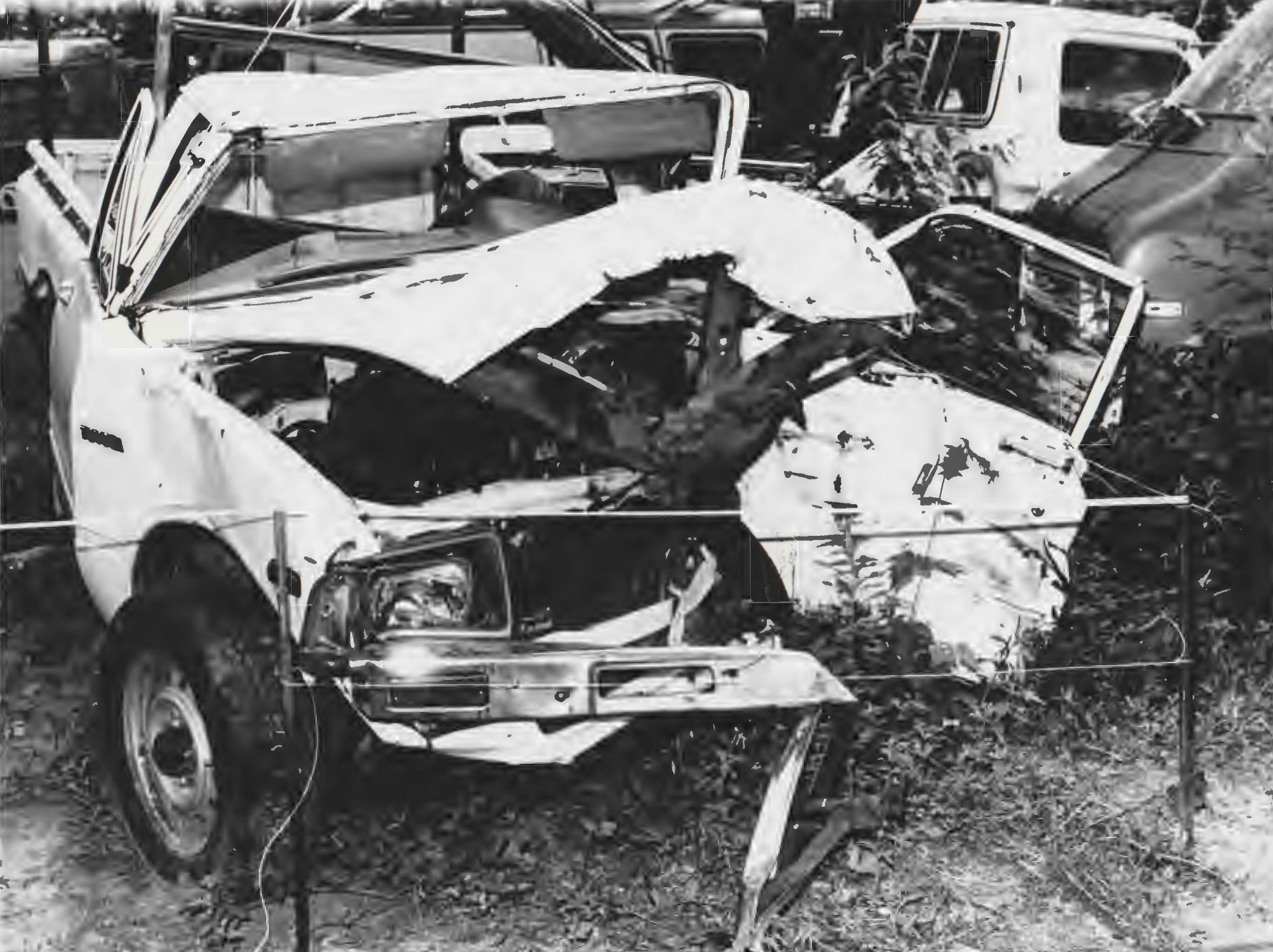
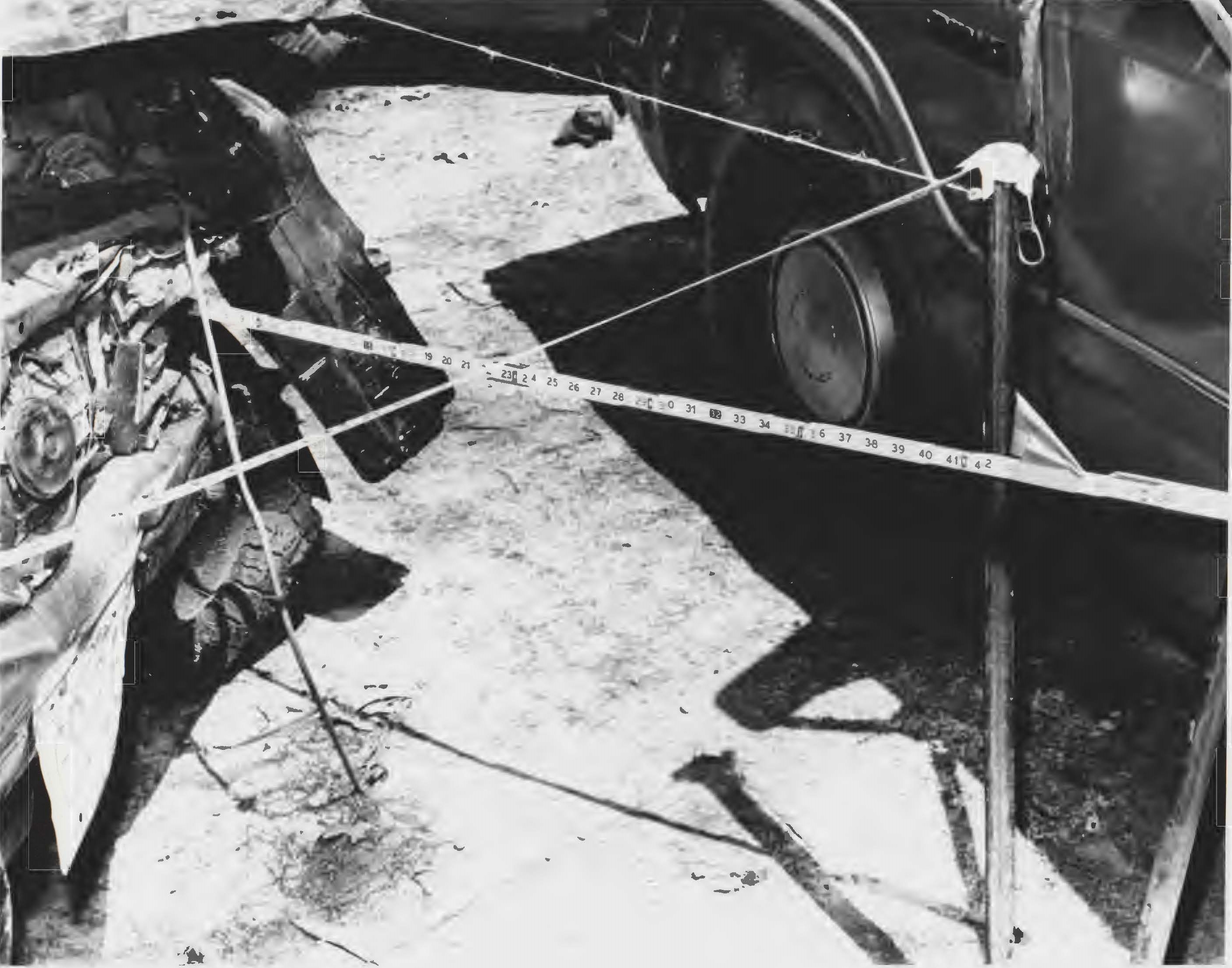
Draw a too-scale diagram of the deformation onto a piece of graph paper. This will be your reference for using the formula(s). Let me warn you first, the formulas are very complicated - more so than the conservation of linear momentum formula. There are charts which I will include based on thousands of test results in fixed barrier tests. With a two vehicle accident, you must calculate the combined speed within the system. Unfortunately, since both vehicle were moved, the final resting place after collision could not be established and as such, the conservation of linear momentum formula can not be used. However using the combined speed formula we can determine the speeds of the vehicles based on skid marks and the deformation of both vehicles.
This is a very intense study of the crush formula(s) and at the end I will provide you with a very usable formula for the frontal and side deformation for most vehicles.
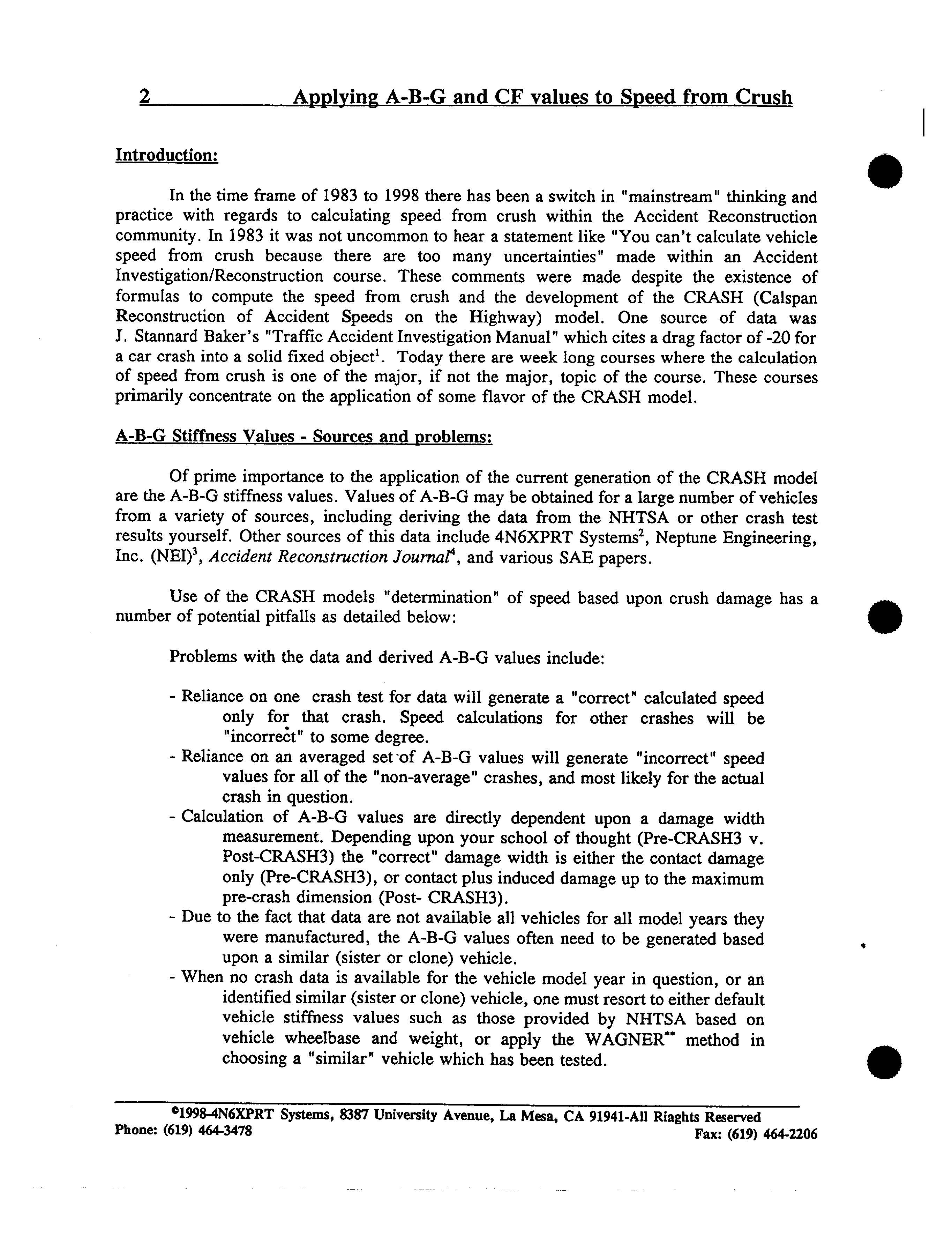
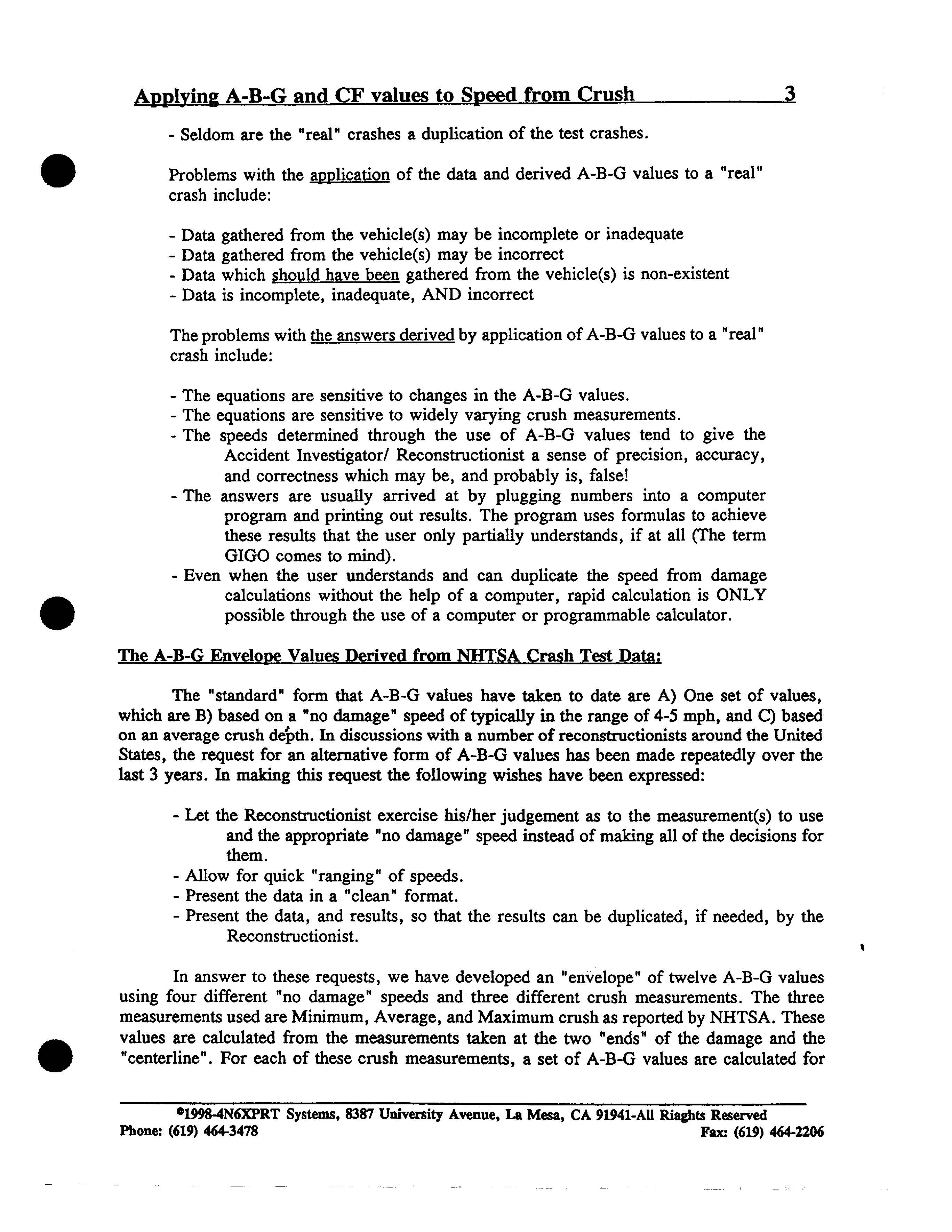
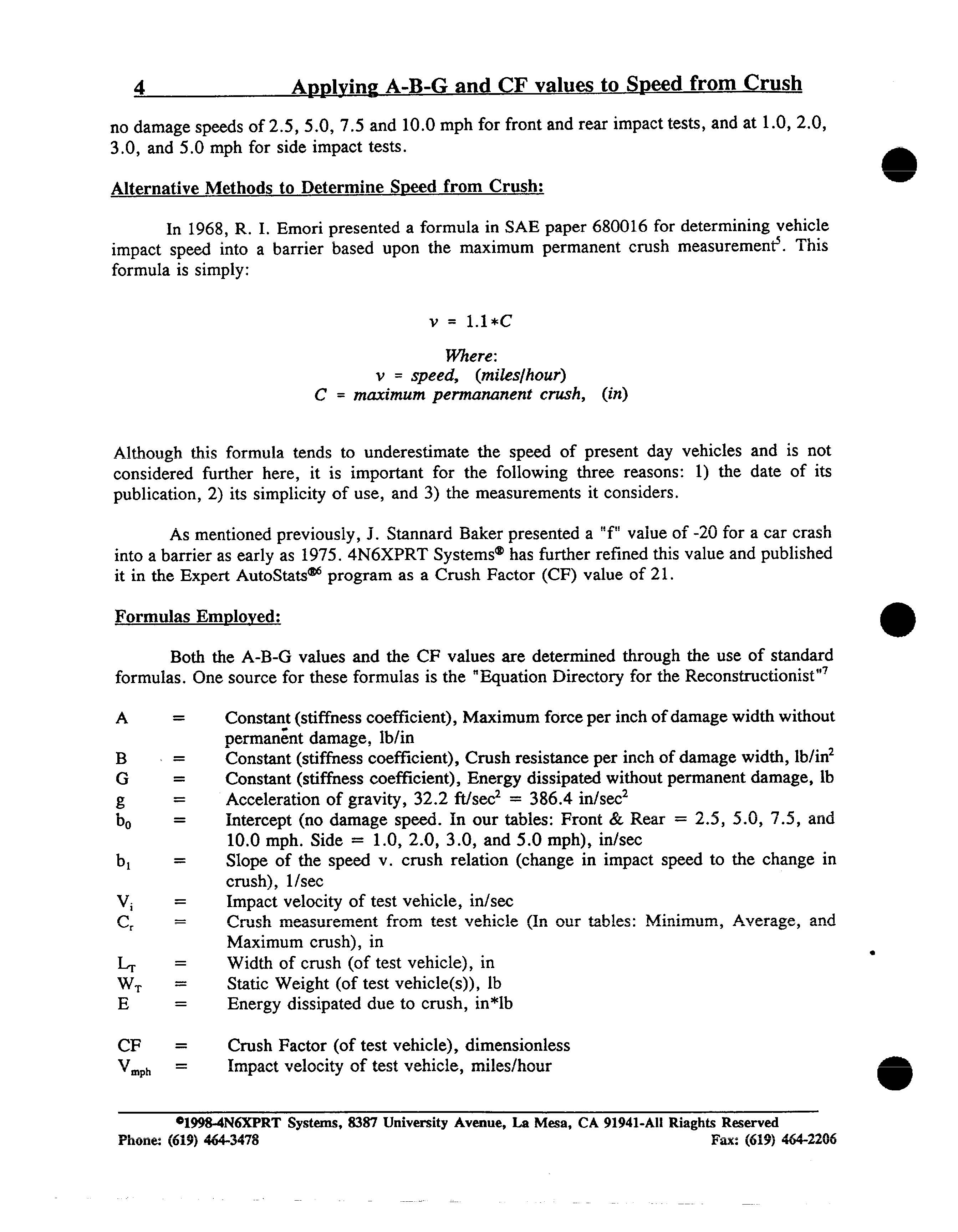
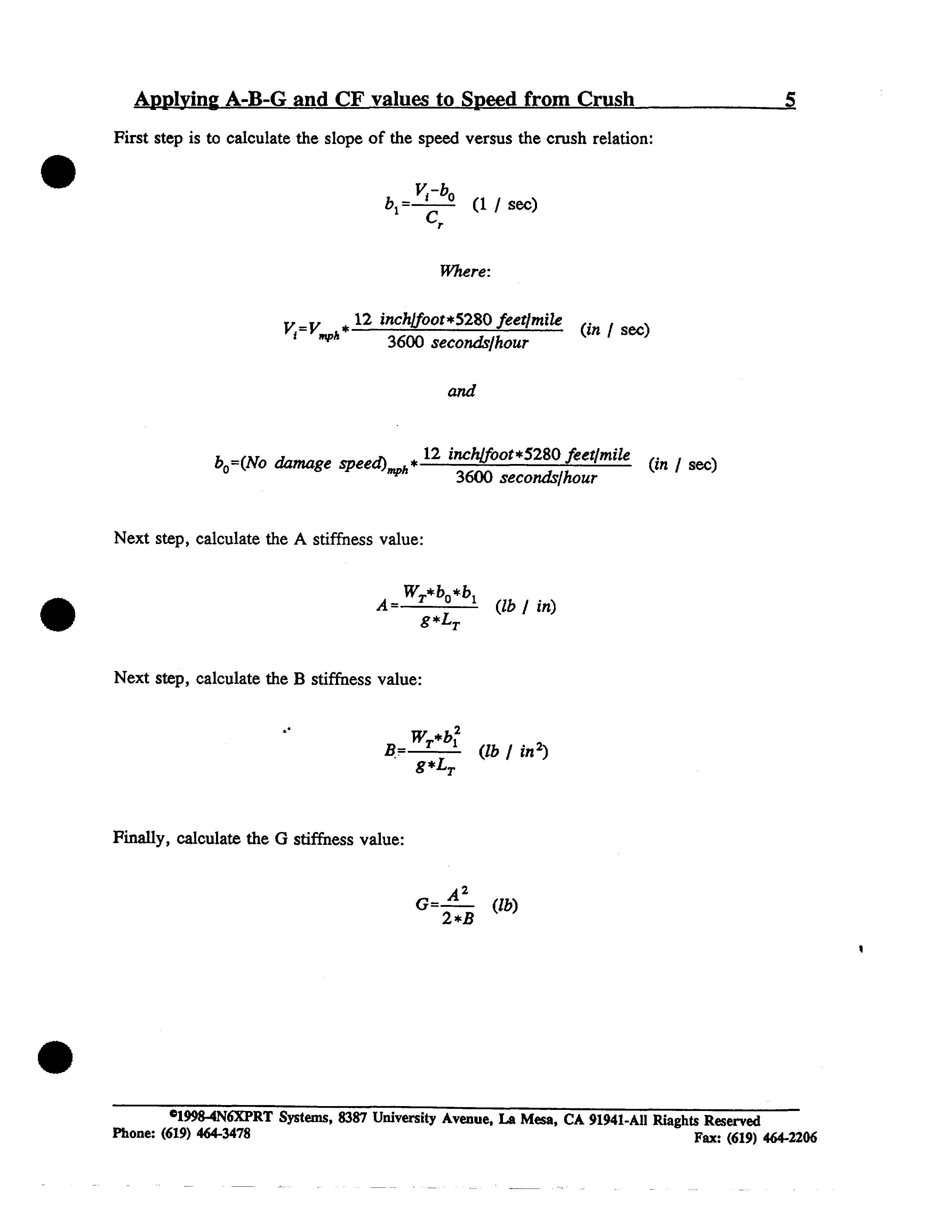
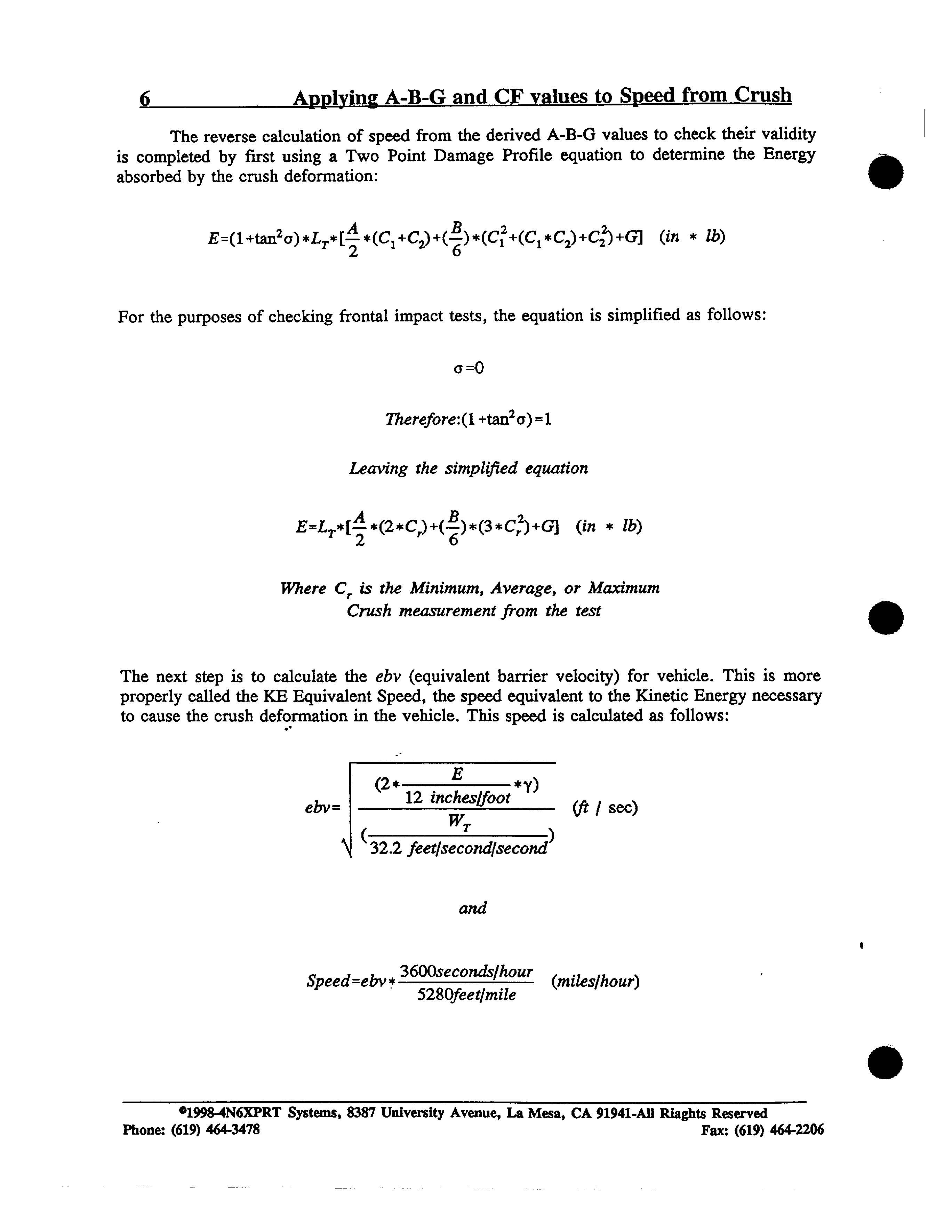
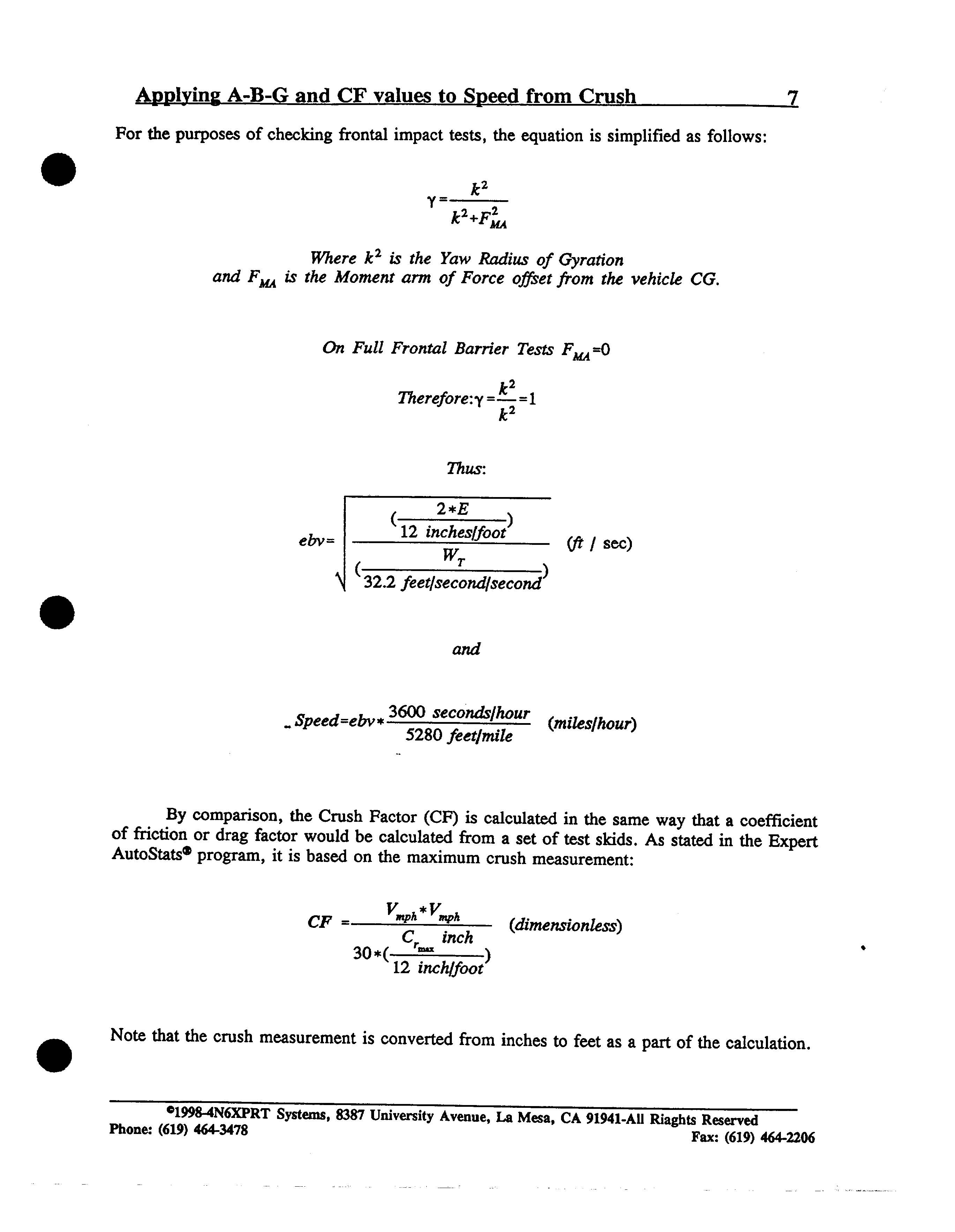
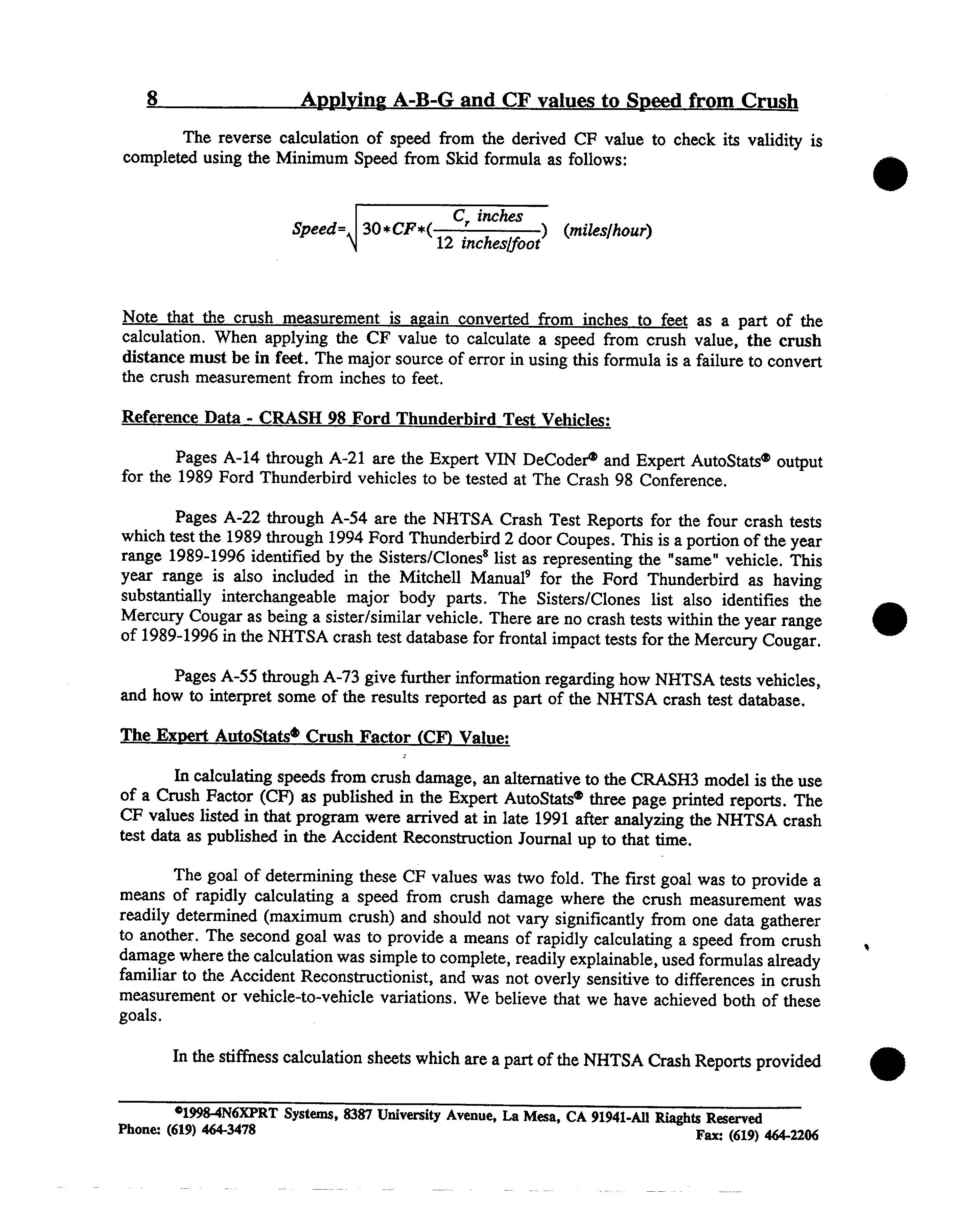
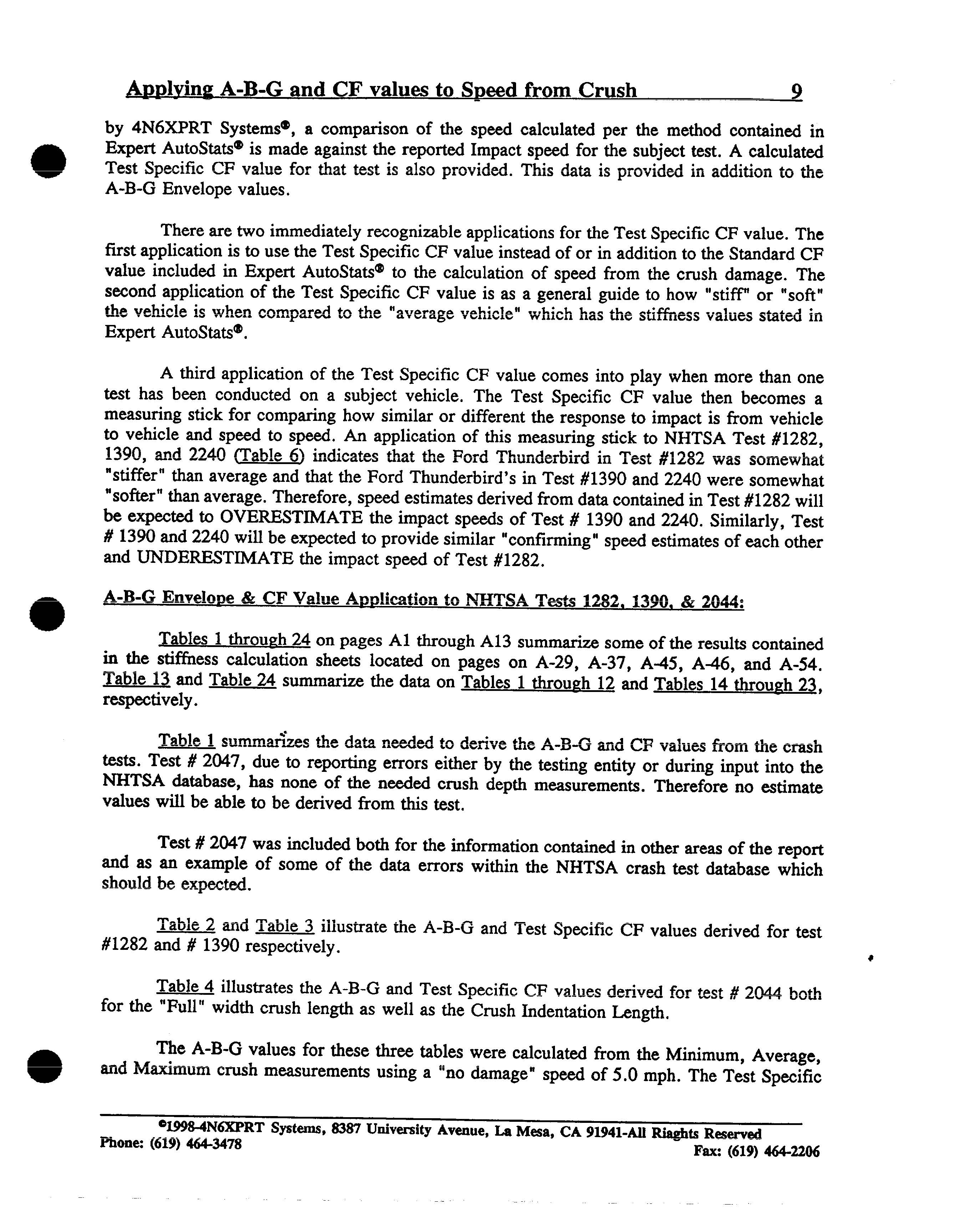
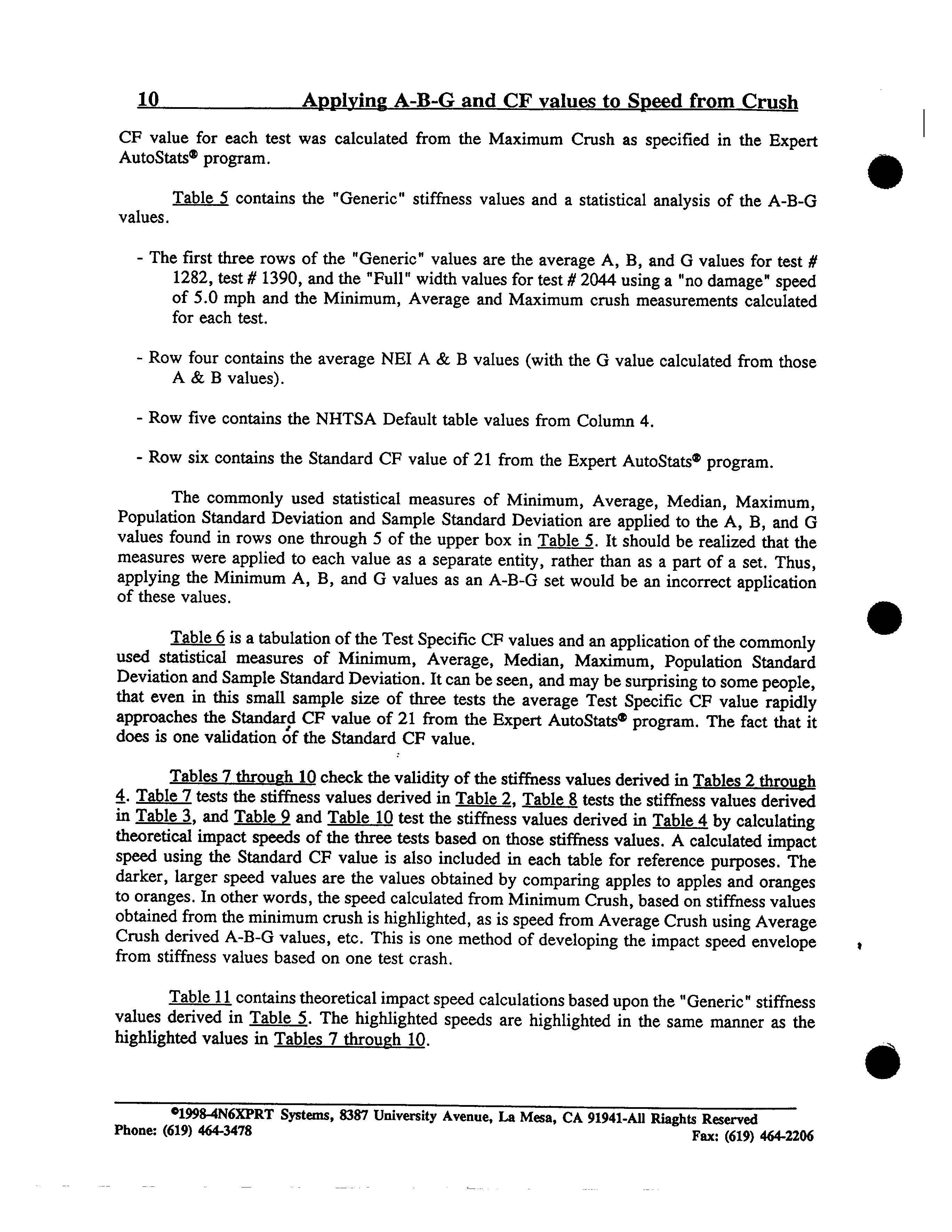
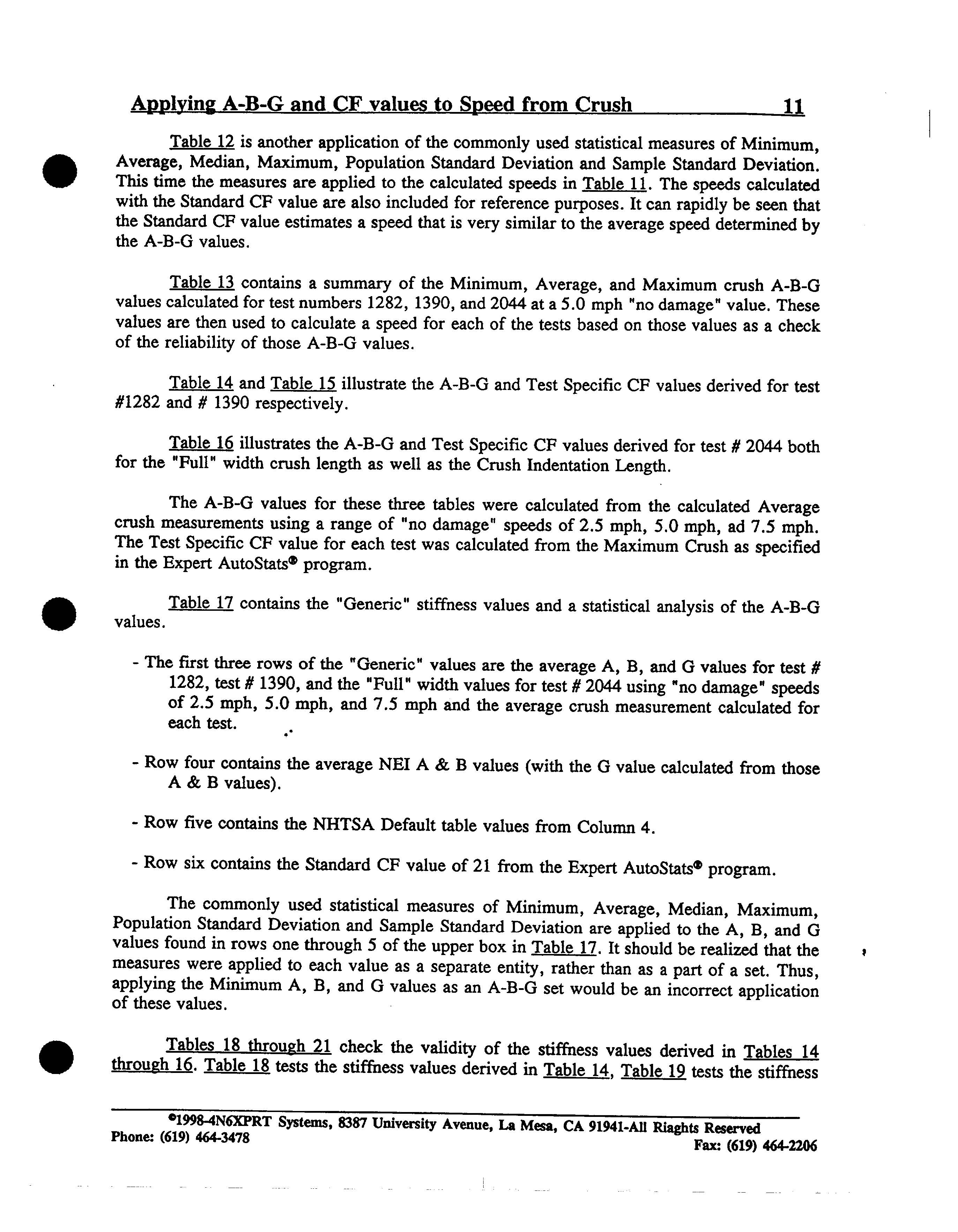
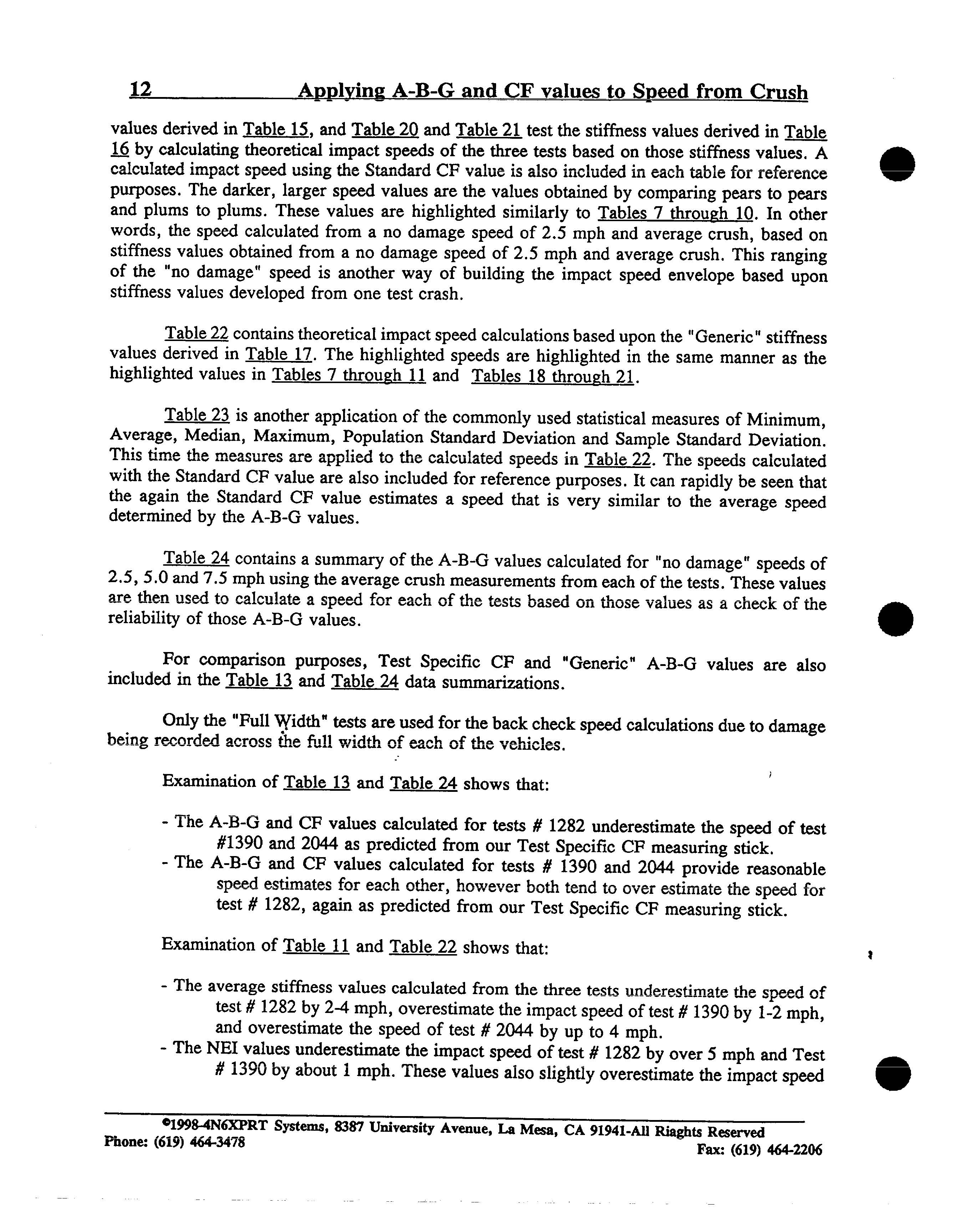
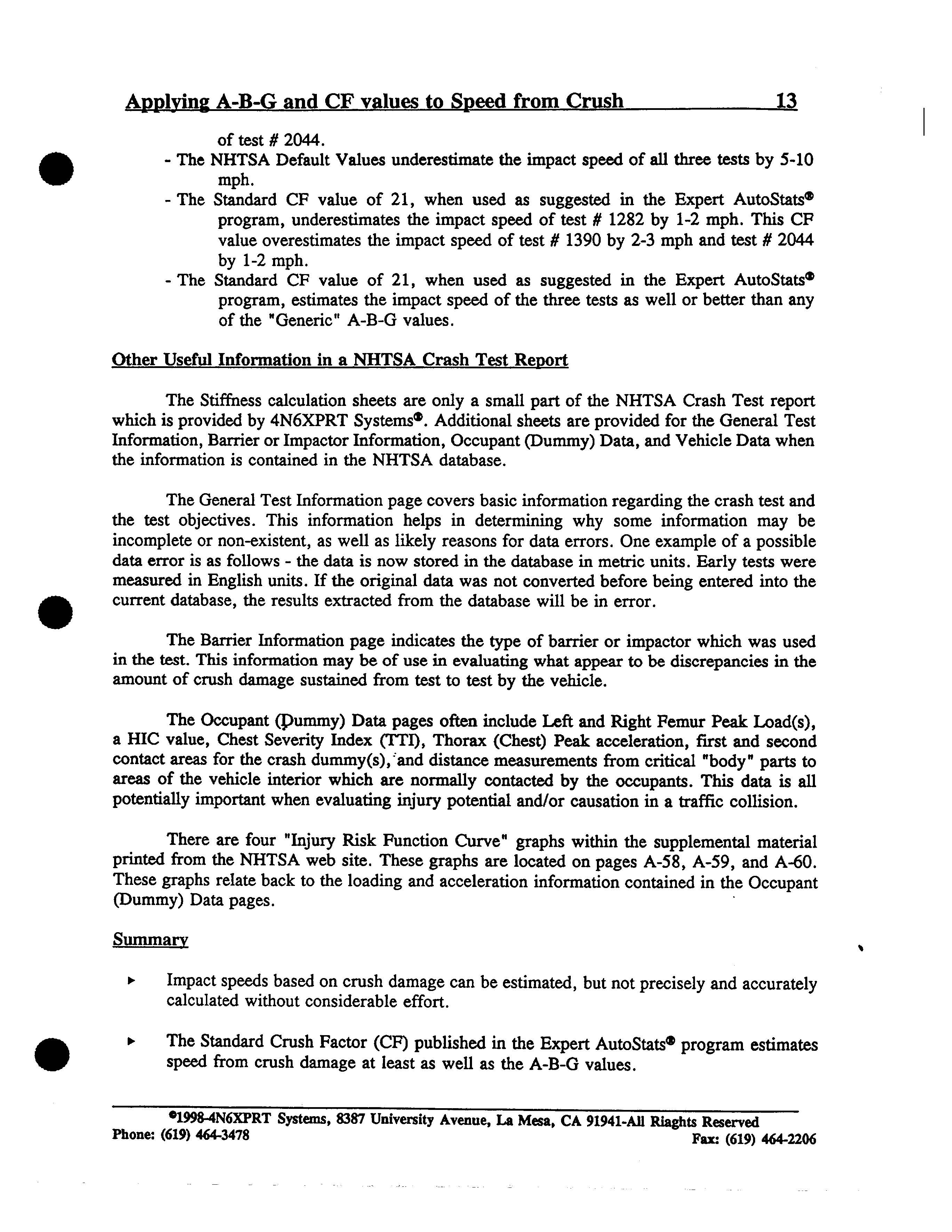
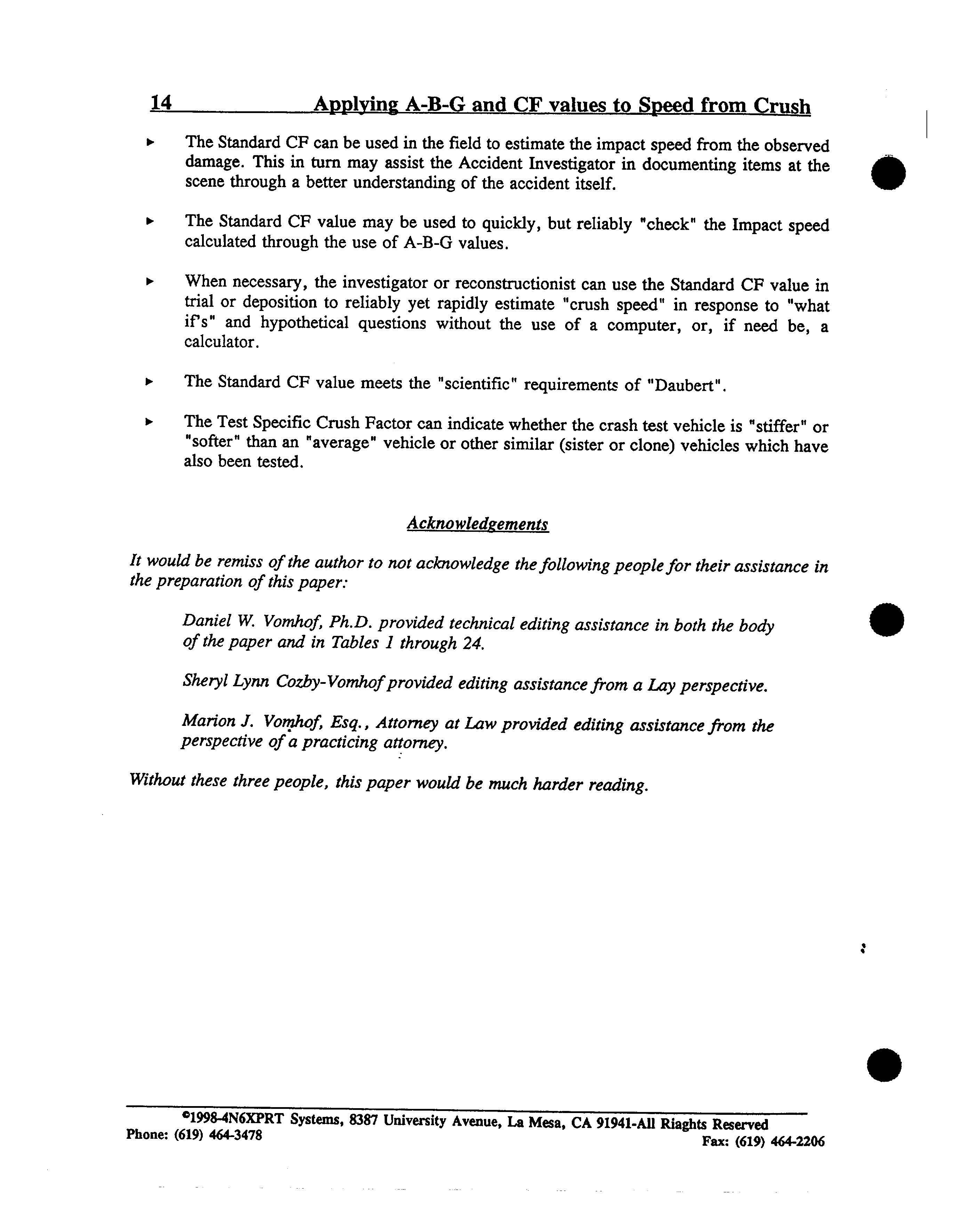
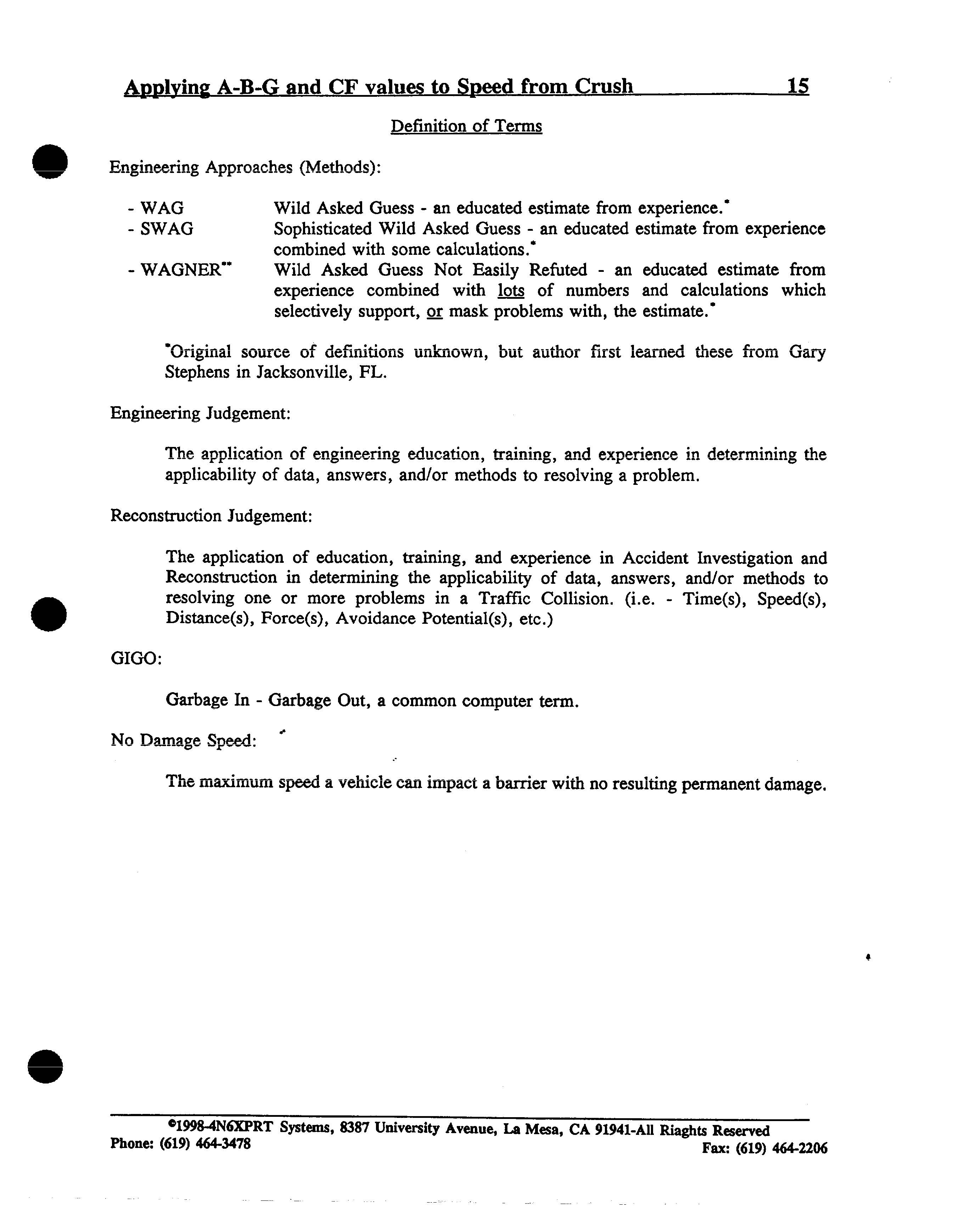
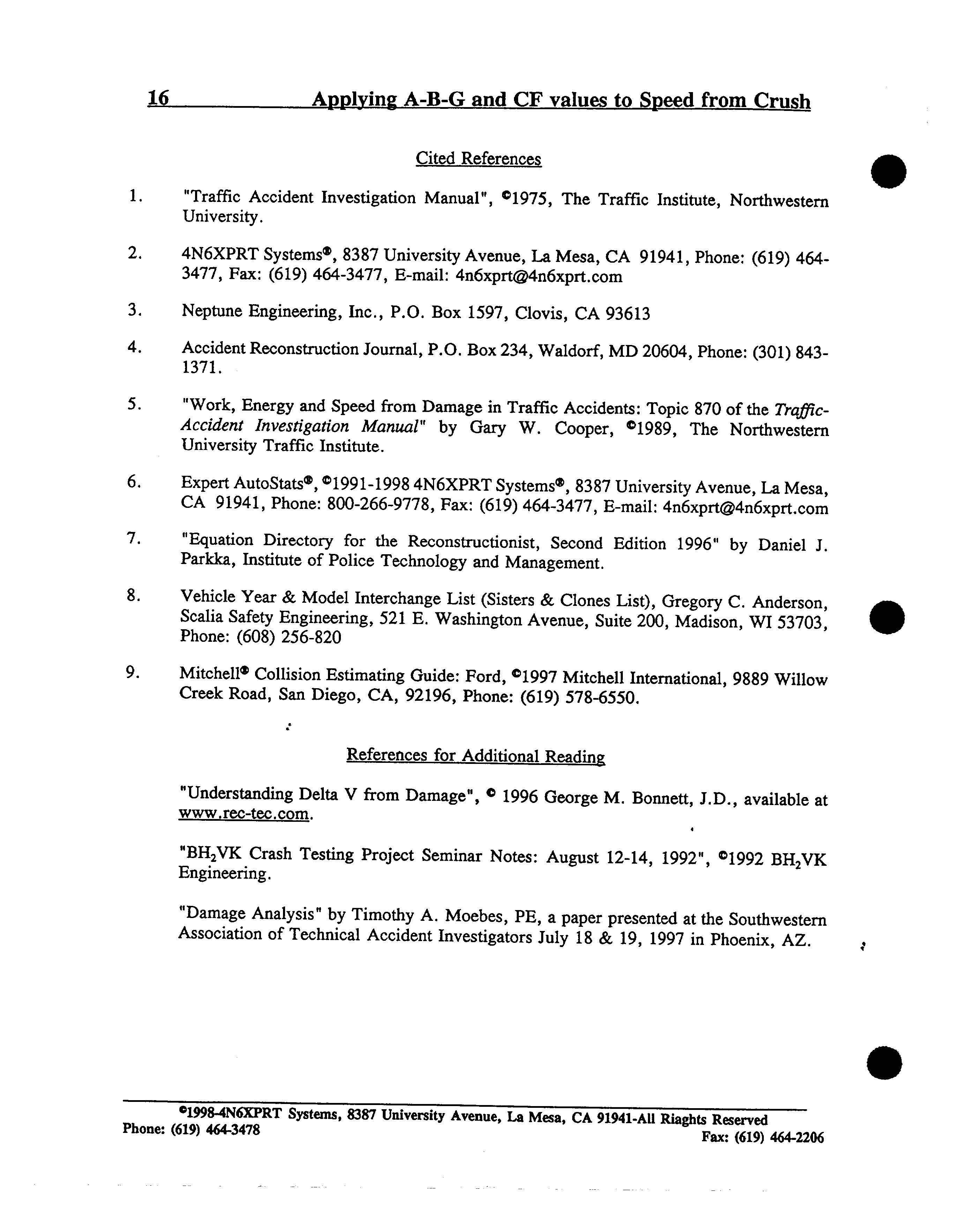
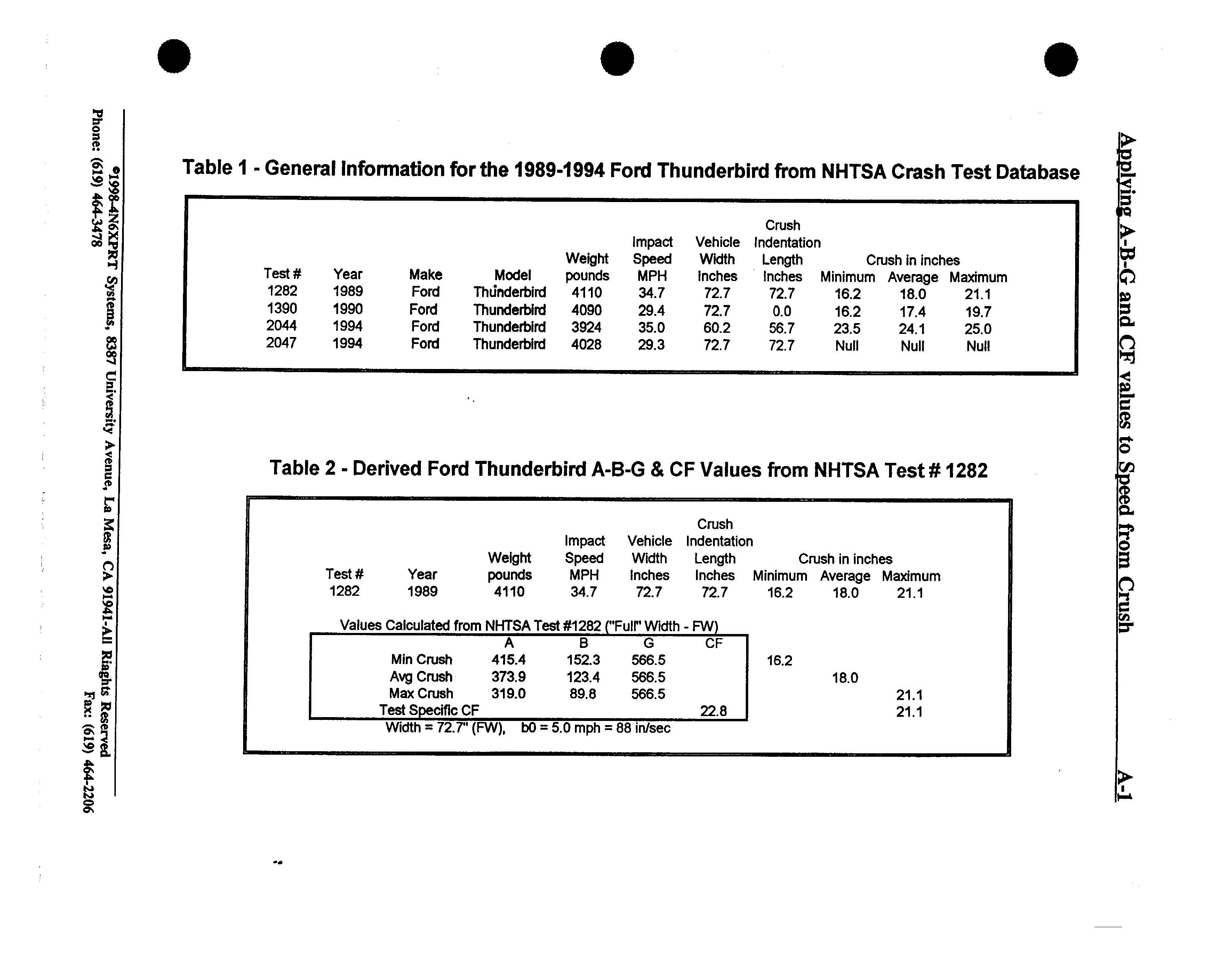
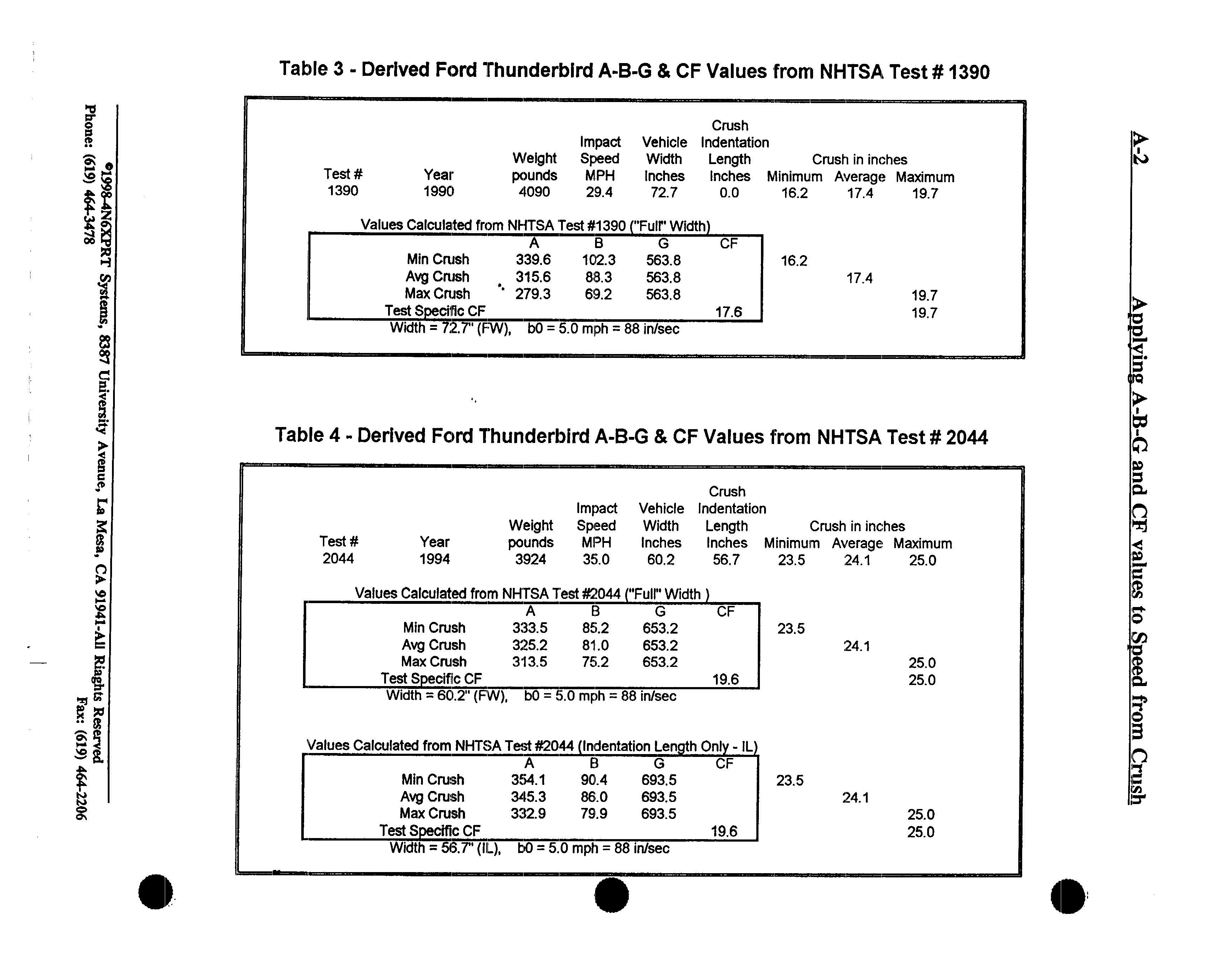
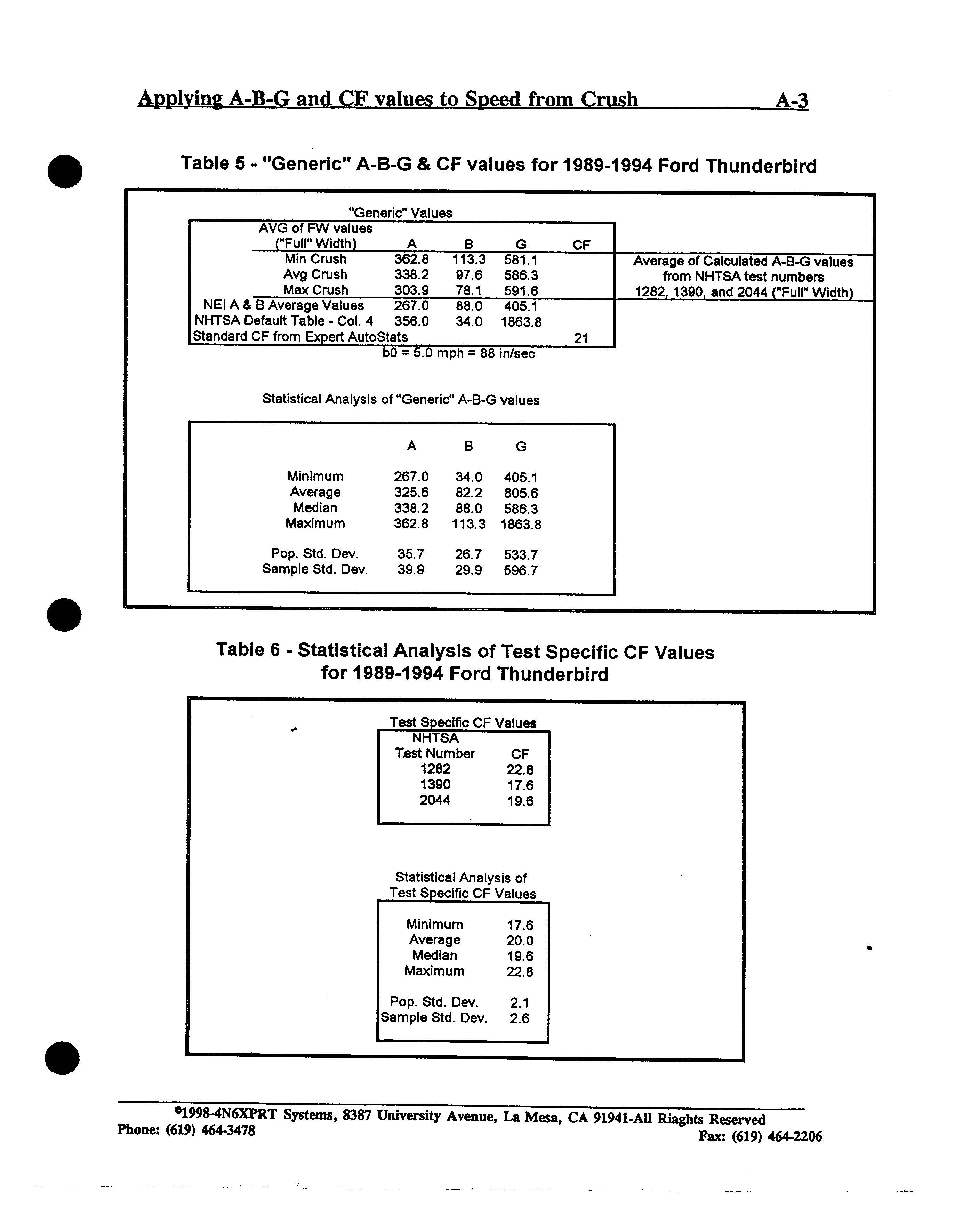
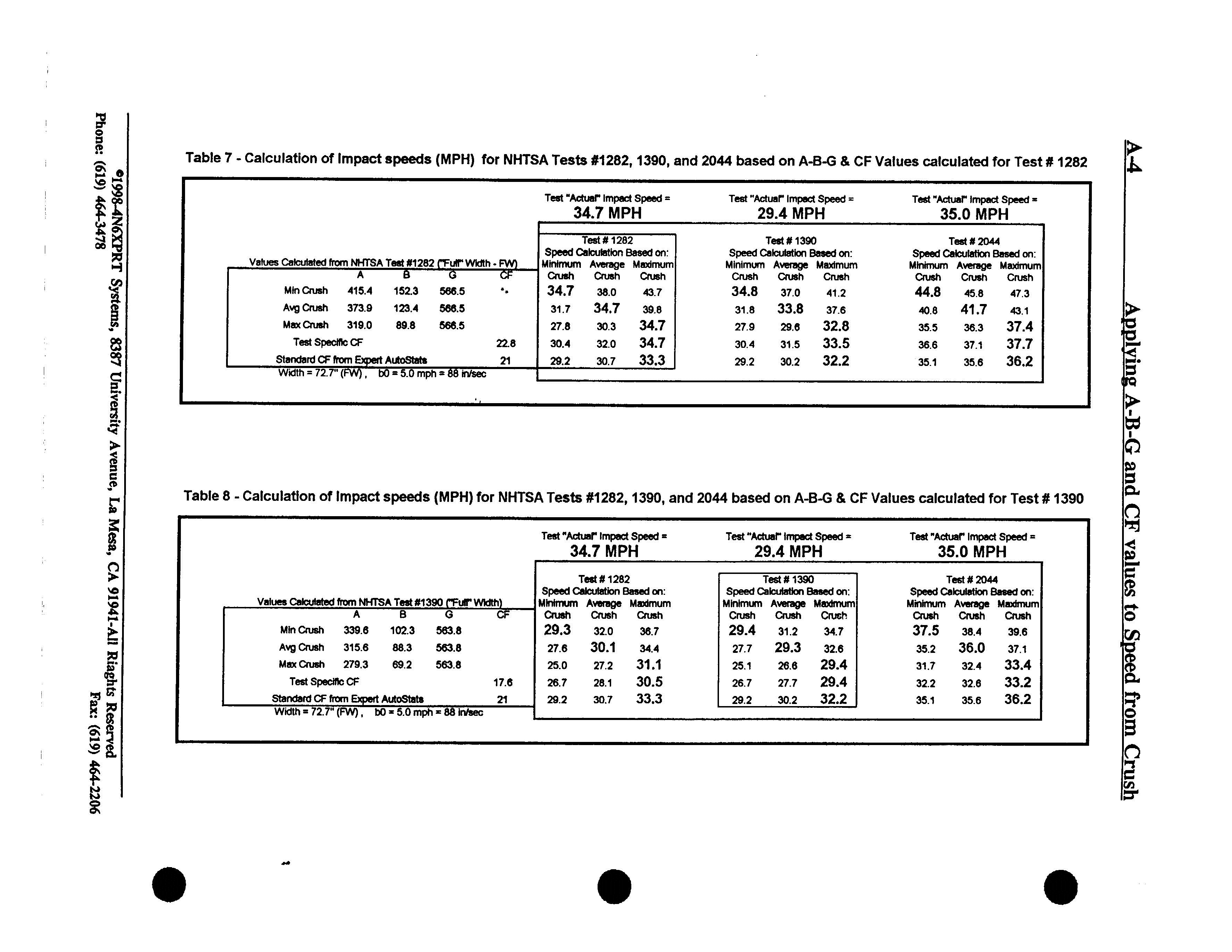
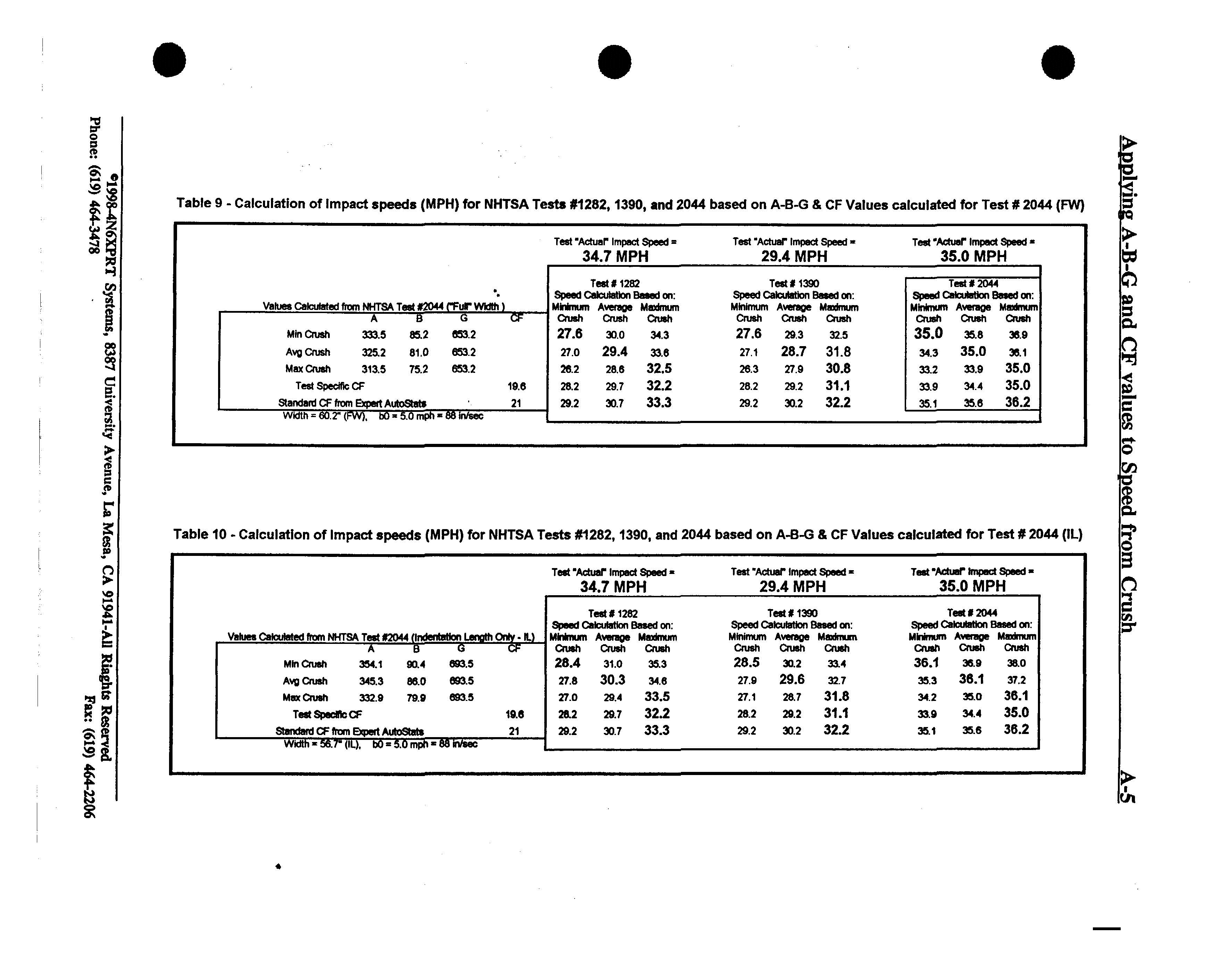
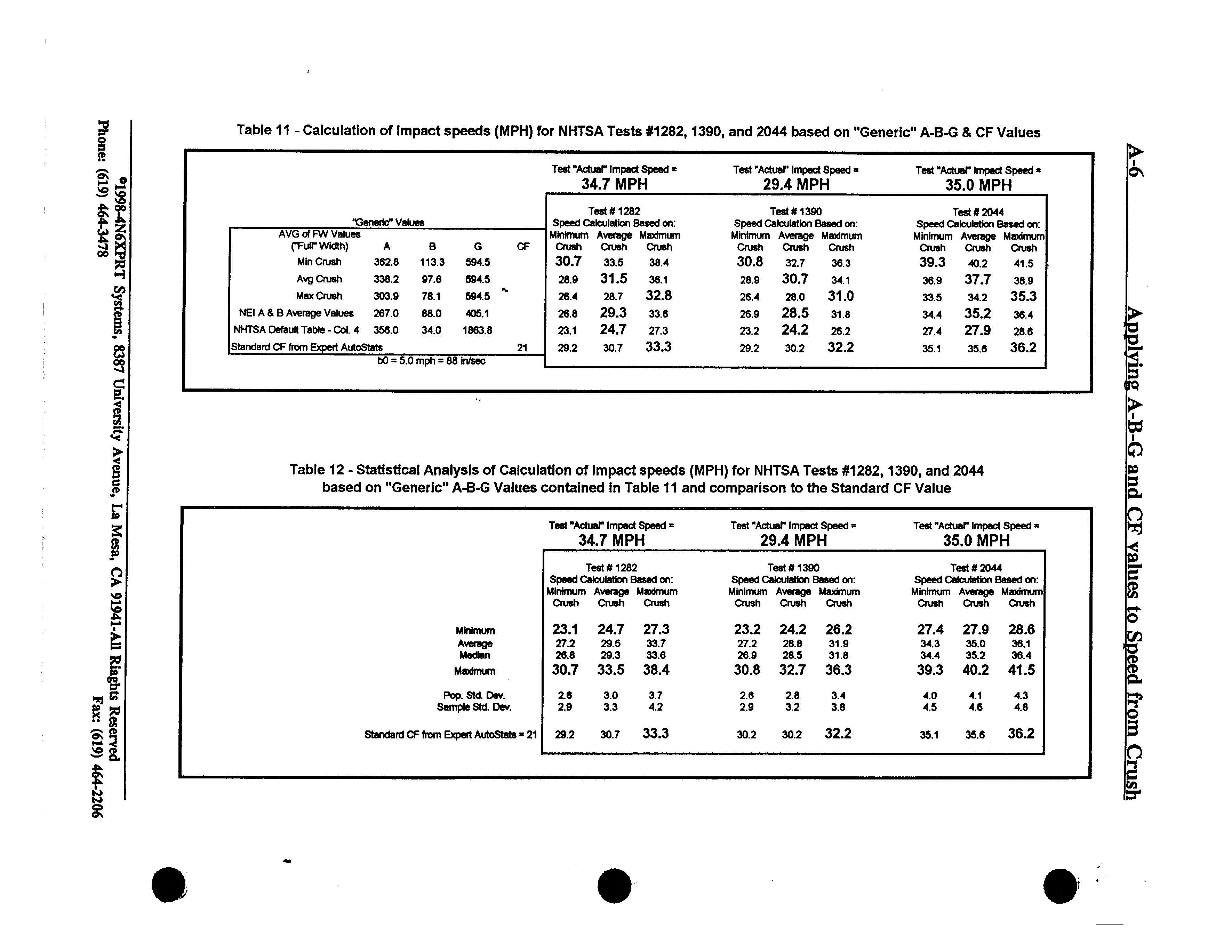
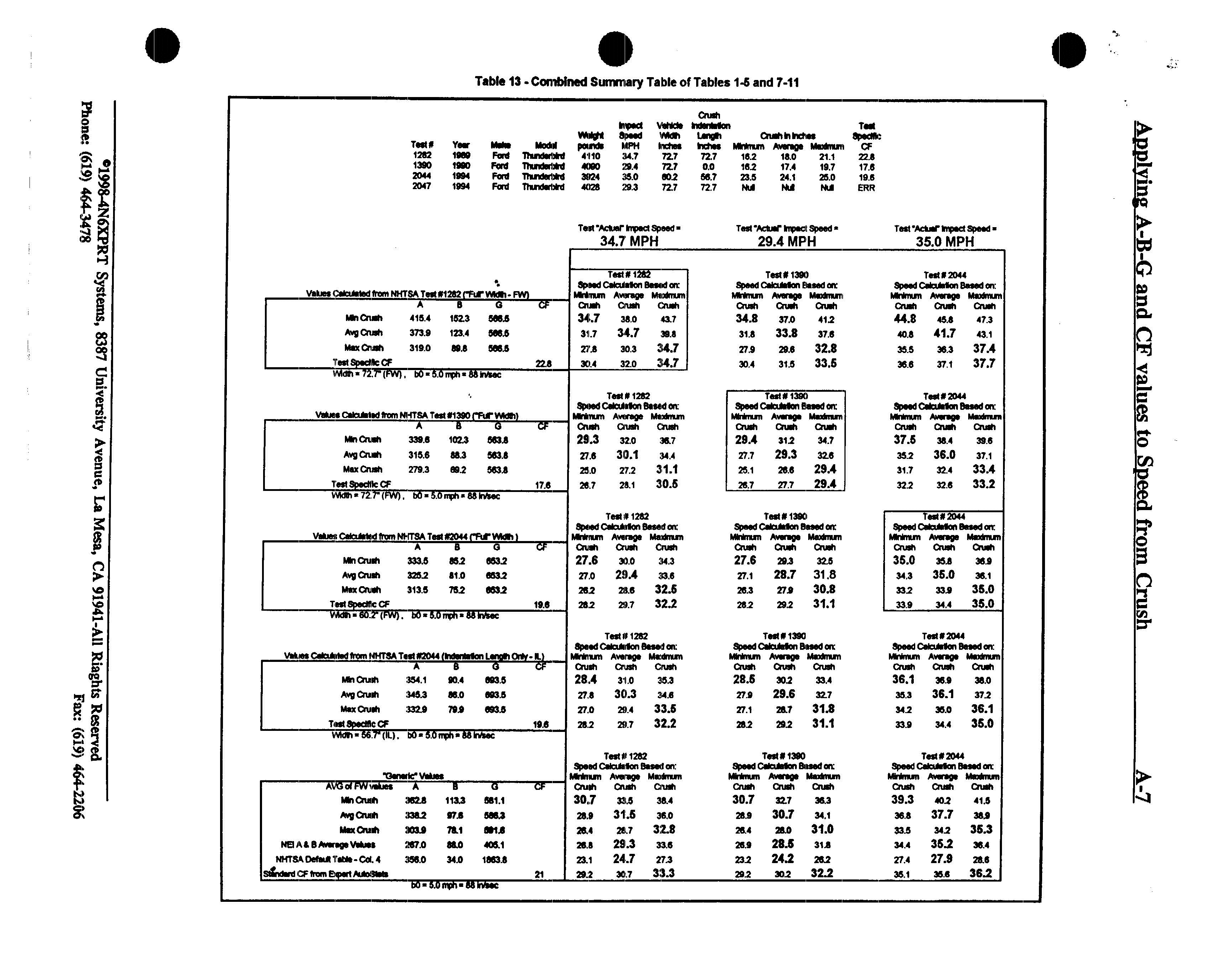
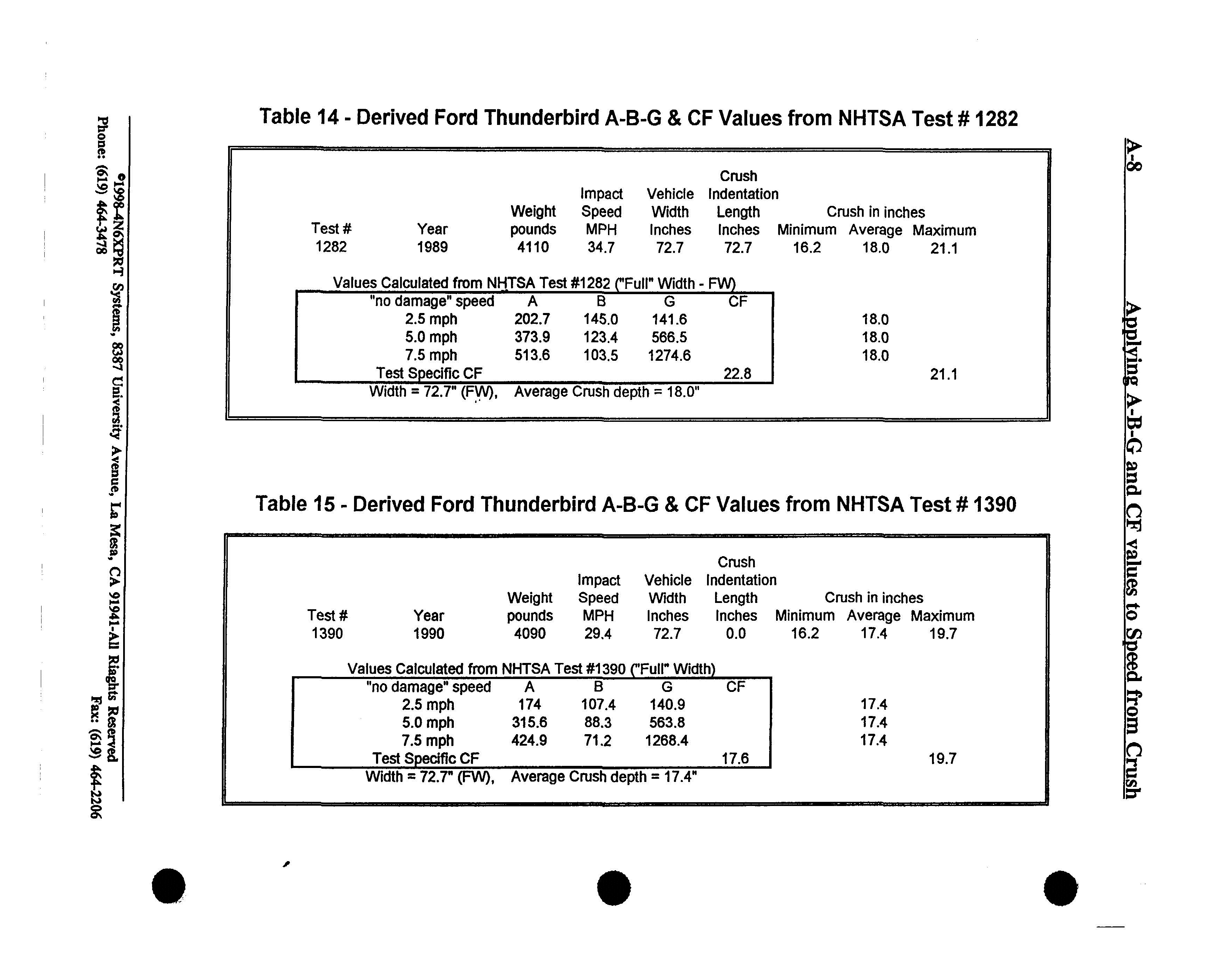
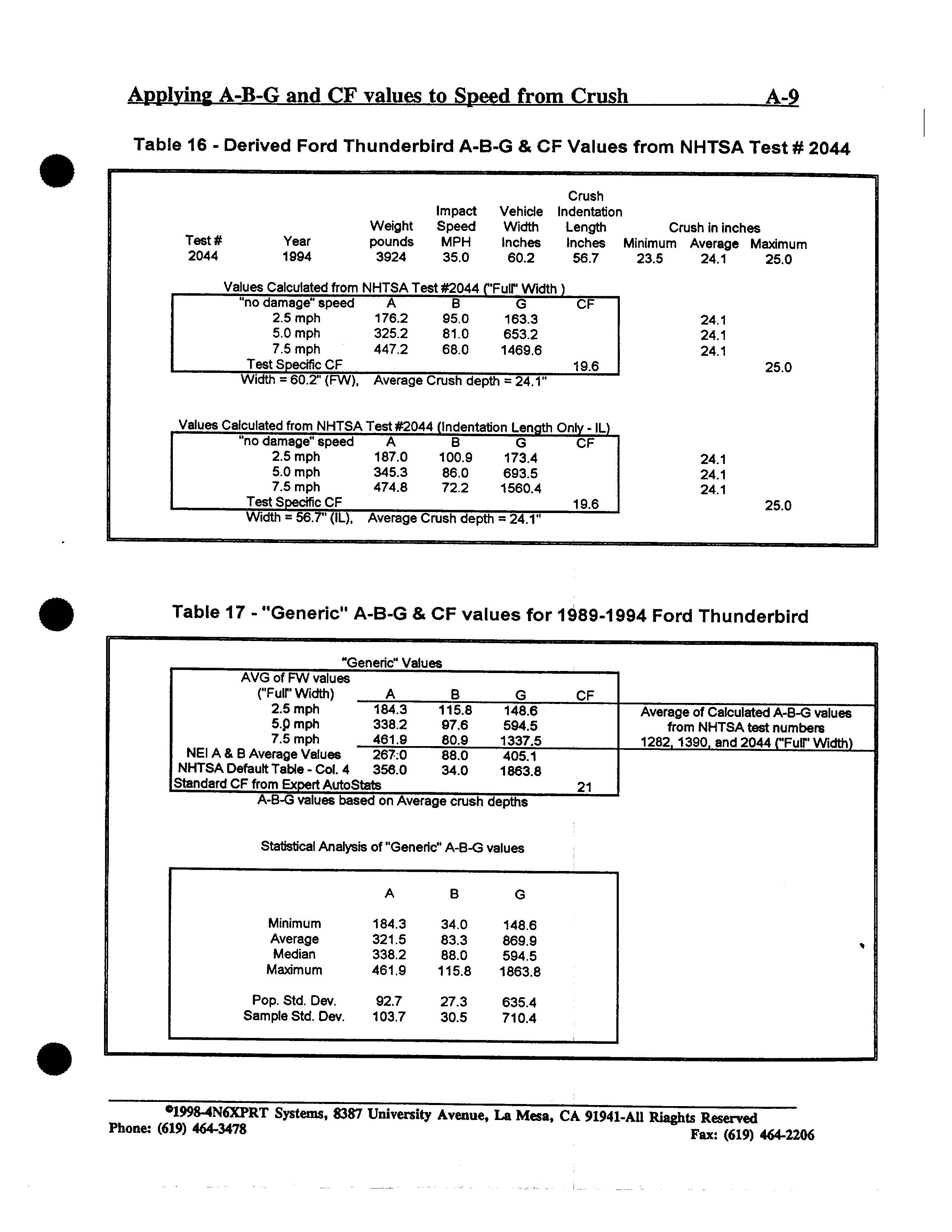
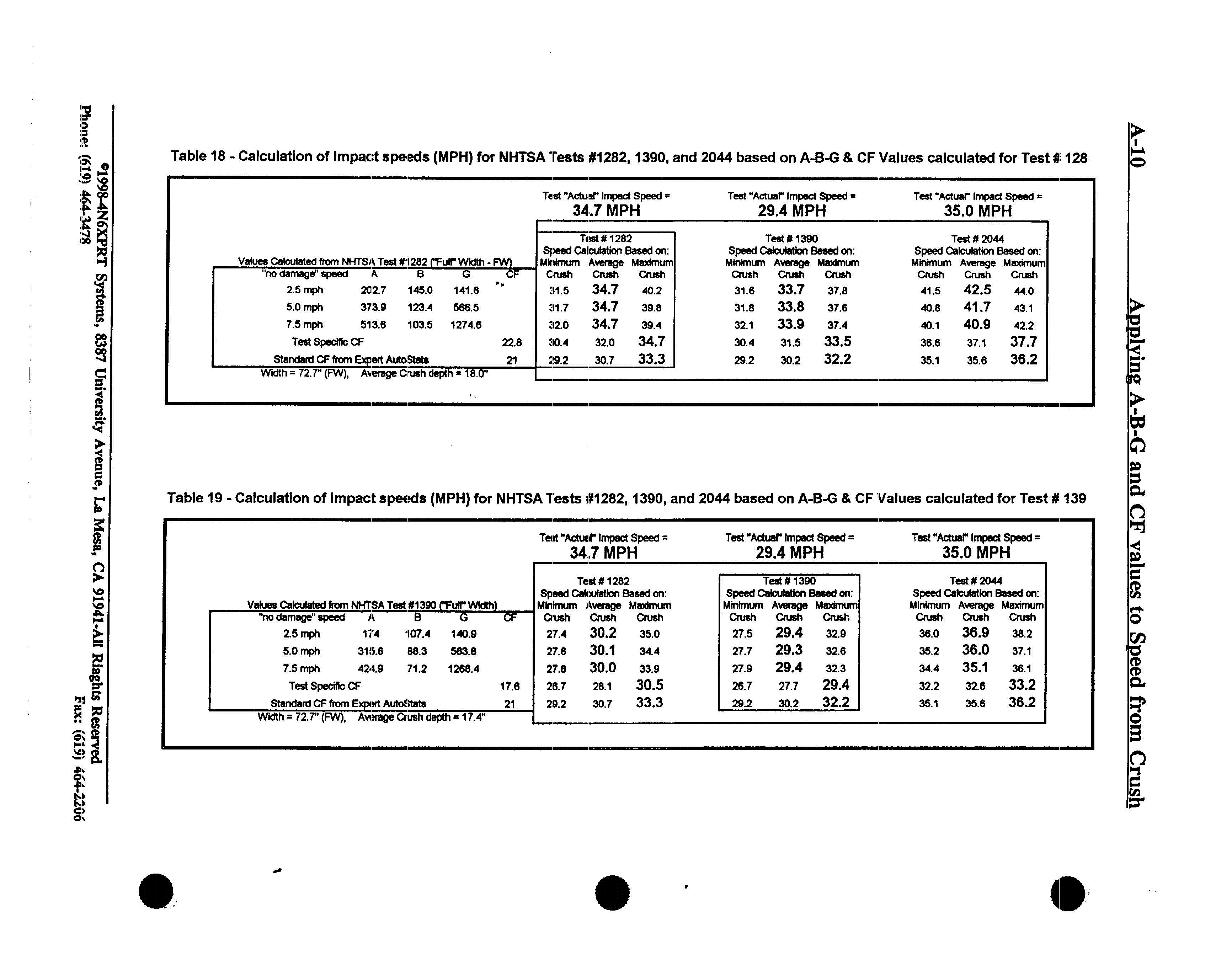
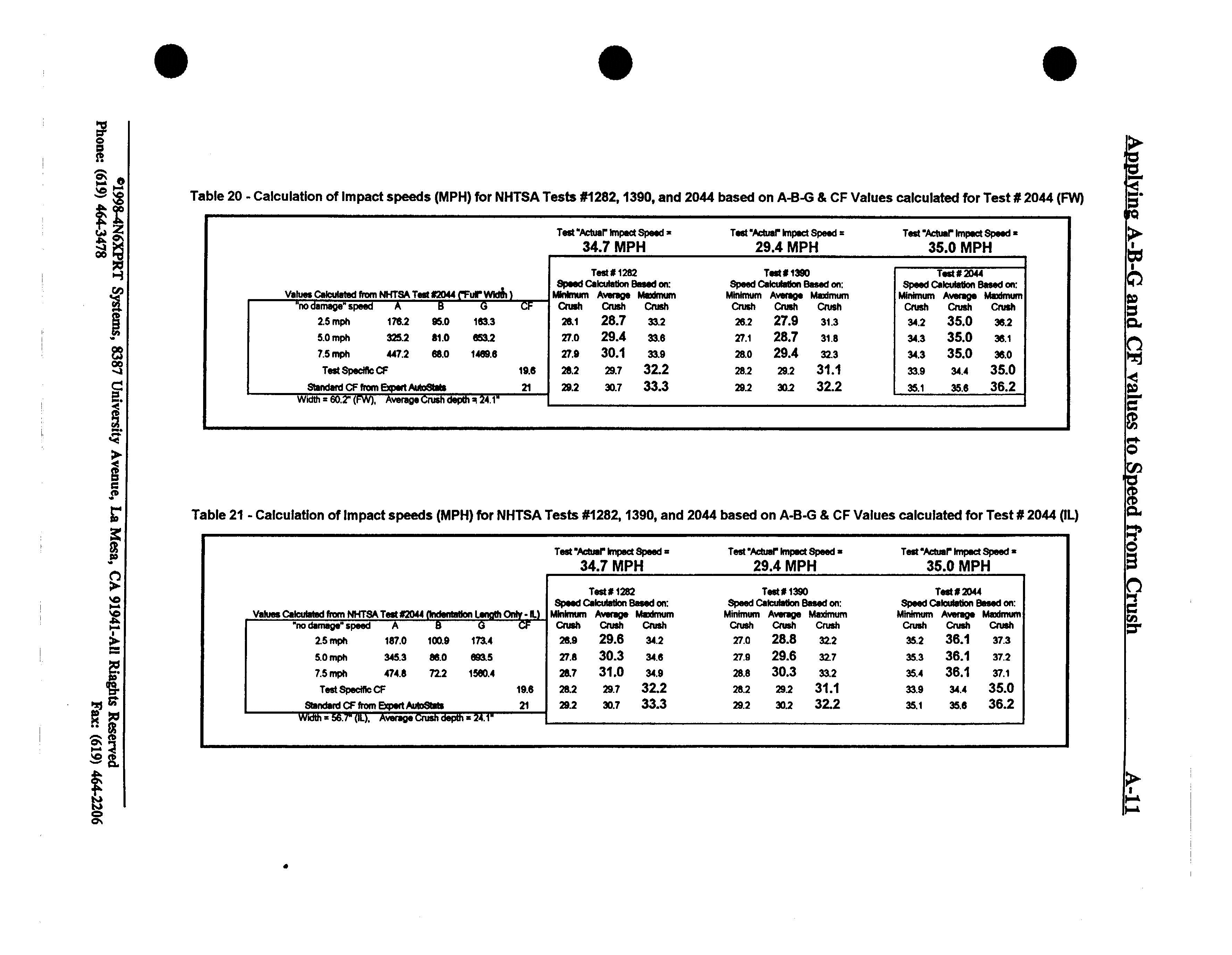
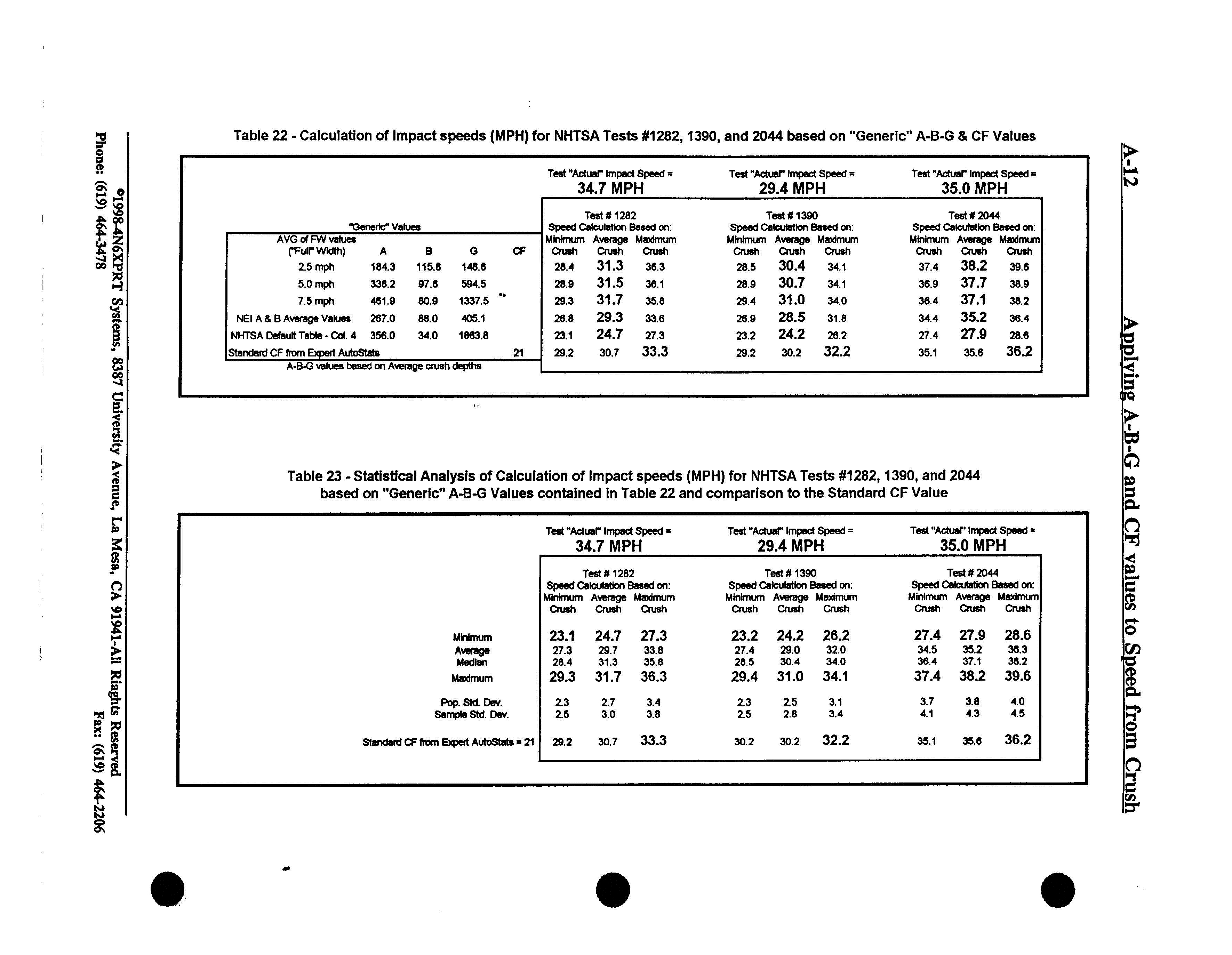
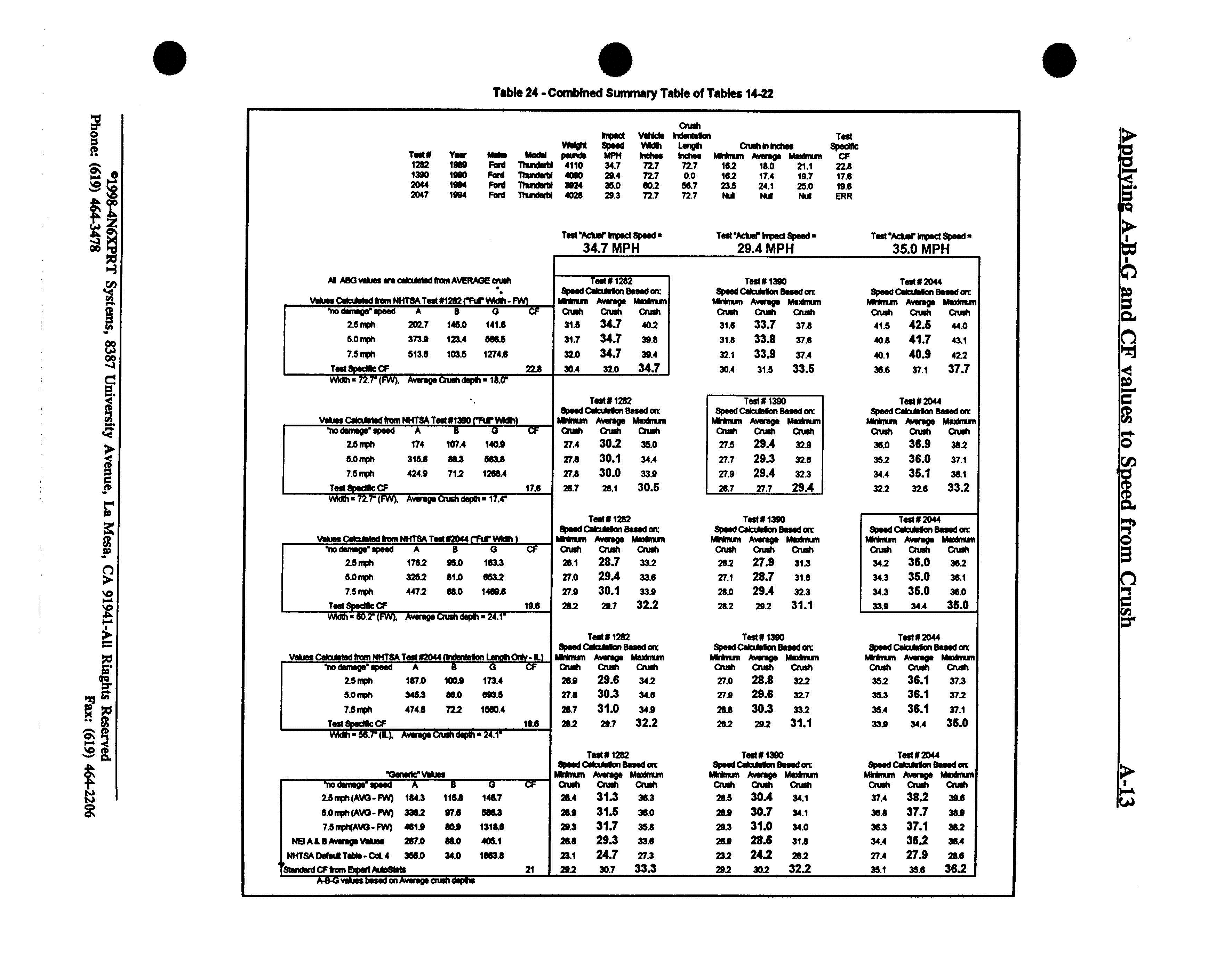
Well that was quite a bit of data derived from crash tests. These charts can be similarly used like the drag factor charts used for the tire mark calculations however the more accurate measure is the actual physical "mapping" of the deformation obtained by measuring the vehicle(s) involved in the collision. The below formula(s) can successfully used once you obtain the maximum amount of deformation or the average amount of deformation data obtained from your measurements. There are two formula used. The first are the three frontal impact deformation formulas and the second is the single side impact deformation formula. When calculating speed from Crush or deformation, you can not use a single formula for all frontal impacts. A small Toyota sedan will produce a greater amount of fold over deformation than that of a Ford F-15 pickup truck. Therefore, there are three formula. The first one is speed from deformation for a small vehicle, second for a average size vehicle (like the sedan versions of the 70's) and the large vehicle deformation formula for larger vehicles (like standard size pickup trucks, older sedans like the ones built in the 60-70's.
FOR FRONTAL IMPACT ONLY they are:
1. S = 551- (46.8*(√150-Crush)) SMALL VEHICLE FORMULA
2. S = 551- (46.8*(√141-Crush)) AVERAGE OR MEDIUM VEHICLE FORMULA
3. S = 551-(46.8*(√139-Crush)) LARGE VEHICLE FORMULA
For our example, we will use the data derived from the pickup truck shown in the above photo. After measuring the deformation of this pickup we learn that the crush is 23".
Now using the Large Vehicle Formula we can calculate the amount of energy (Speed) dissipated by the crush.
S = 551-(56.8*(√139-Crush))
S = 551-(56.8*(√139-23))
S = 551-(56.8*(√116))
S = 551-(56.8*10.77)
S = 551-612
S = 61 Mph
Now don't forget the other energy that was contained in the system. Skid marks up to the collision have to be accounted for, since energy was depleted skidding toward collision for both vehicles. The the deformation speed from the crush on the other vehicle if there is one, its skid marks up to the point of impact. So let's use the combined speed formula to calculate the total speed in this collision.
The combined speed formula is:
S= √(S12 + S22 + S32 + S4)
For our example we will use:
S1 = Speed for the Skid of the Pickup up up to the POI = 20Mph
S2 = Speed from Deformation of Pickup truck = 61 Mph
S3 = Speed for Skid of the Chevrolet Caprise Classic =15 Mph
S4 = Speed from Deformation of the Chevrolet = 47 Mph
S = √(202 + 612 + 152 + 472)
S = √(400 + 3721 + 225 + 2209)
S = √6555
S = 81 Mph
This is the total speed involved in this FRONTAL IMPACT collision which was contributed by both vehicles.
Now side impact speed has only one formula, it is
S = 551-(46.8*(√139-Crush))
For our esample the below truck was hit and the measurements follow:
The deformation as 5 inches (Not a major collision, but enough to reconstruct) using the side impact formula we find:
S = 551-(46.8*(√139-Crush))
S = 551 - (46.8*(√139-5))
S = 551-(46.8*(√139-5))
S = 551-(46.8*√134)
S = 551-(46.8*11.57)
S = 551-541
S = 10 Mph
\